YOUR FARM
































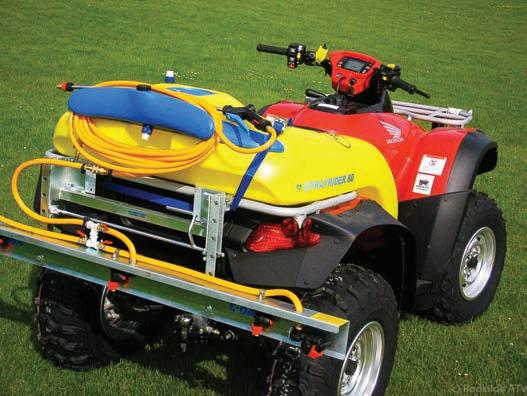
















































Farmers and their families trust Boyce Chartered Accountants for specialist accounting and business advice.
With 7 offices across regional NSW, Boyce is the employer of choice for business professionals in regional NSW. Our accountants and financial planners live and work in the country. We love to introduce our recruits to the benefits of rural life - and we support young talent to enjoy fulfilling careers in the Monaro and Snowies.
Want to work with a team that understands the challenges and rewards of agricultural enterprise? Partner with Boyce to achieve your goals.
Boyce’s Cooma team is led by Julie Schofield.
36 Bombala St, Cooma P 02 6452 3344
E infocooma@boyceca.com www.boyceca.com
The Monaro is currently experiencing its third consecutive year of well above average rainfall and prospects for another excellent spring.
The significance of such an occurrence should be put in an historic context.
While there may be discussions and disagreements amongst long term Monaro graziers about which are the worst droughts in living memory, there seems to be consensus that this is arguably the best and wettest period ever experienced.
Certainly landholders are being bogged in locations on their properties that most would think impossible to comprehend.


And, while it has undoubtedly been a period of difficulty in terms of livestock animal health issues (in particular internal parasites and sheep blowflies), and while there has been an ever-so-slight tendency therefore for some graziers to express just the slightest sense of frustration with these seasonal conditions, it is a far cry from the overwhelming personal, physical and financial burden of drought.
Indeed how quickly we forget that it was only a few short years that the entire Monaro region was suffering from a prolonged period of drought the likes of which many people had never seen before.
The dramatic turnaround in seasonal conditions over the past three years and ongoing wet conditions with exceptional pasture and vegetative growth provides an additional benefit which words cannot describe.
This relates to the restoration and resuscitation to the natural environment. Not only are we seeing this in the health and vitality of our streams and waterways but also the regeneration of our vegetation - both native and introduced - and living systems. This is of course especially reinforced after the devastation of the bushfires and aforementioned drought conditions.
From an agronomic and agricultural perspective I believe too that the current ongoing buoyant seasonal conditions can and should represent a tipping point for landholders and land management into the future.
In relation to this there are a number of key areas which are of particular relevance.
Firstly the obvious replenishment of soil moisture to the extent that our soil moisture profile is now full (to overflowing). This is obviously manifest in being bogged and the amazingly healthy flow of streams.
Secondly the abundance of paddock feed grown over the past few years.
While this is understandably wonderful news for district graziers and especially their livestock, it also has profound significance in terms of the build-up in organic matter in the soil together with humus and litter on the soil surface.


Indeed an expression I often refer to is one of my mentor Dr Keith Hutchison from CSIRO who rfers to “the miracle of the litter mat”.
Organic matter lying on the soil surface in the form of a litter mat provides a buffer for soil losses through erosion as well as significantly modifying the effects of soil temperature and prevention of evaporation from the soil surface.
This litter layer also is the “entrance point” as a food source for the soil biota which are effectively the engine room of the soil.
If you have a healthy functioning biota then you have a healthy soil and one which mineralises soil nutrients for plant uptake.
The final and especially important aspect of the current exceptional conditions is the near total vegetative ground cover.
This is a critically important “tipping point” because it prevents the invasion of weeds which establish in bare ground which is so prevalent during drought.
The challenge then for all graziers is to capitalise on these exceptional seasonal conditions and to set in place management practices which turn this “tipping point” into a permanent sustainable reality for the future.

Pasture testing over July and August across the South East region is showing that green feed is still good and unlikely to be the primary cause of poor livestock performance this season.
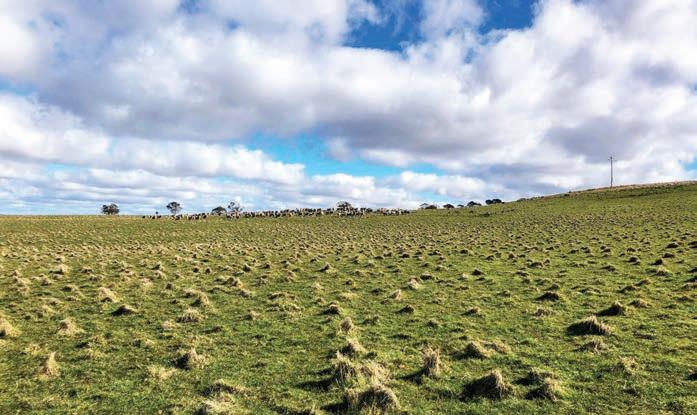
Senior Ag Advisor with South East Local Land Services Matt Lieschke, said the results from recent testing are as expected, with green material testing well in terms of digestibility and energy.
“The green feed that we’ve sampled has tested up well, with most samples sitting around 70 percent digestibility,” Mr Lieschke said.
“From a pasture perspective, the bigger issue at present is the general lack of clover in paddocks and the amount of poor-quality, dead feed.
“In contrast to the high-quality green material, the results confirmed that the dead feed has very little nutritive value, with dry matter digestibility ranging from 39 – 48 percent digestible.”
Sheep were more able to access and select green parts of pasture where available than cattle, Mr Leischke said.
“Livestock will do their best at selecting out the green component in the pasture – the question is, can they readily access the green or do they need to take some dead with it?”
Even if animals are largely eating green material, it doesn’t take much dead feed in the diet to really pull back livestock performance, he said.
“In seasons like this when there’s a mixture of green and dead material in pastures we need to pay close attention to what stock are grazing and provide an appropriate supplement if required.
“Livestock have struggled this year for a whole range of reasons and is some cases it’s been put down a lack of ‘guts’ in the pasture.
“The testing should give producers confidence that green feed is still good.”
Although the results from the testing is very positive, Mr Lieschke points out that it hasn’t always been the case this year.
“Some of the pasture testing in autumn did show up some lower numbers and
there were instances where energy and protein were out of balance.
“I think this explains why we saw some poor stock performance earlier in the year.
“While green feed has certainly improved in digestibility as the season has progressed, animal health issues have also increased dramatically and are having a huge impact, especially worms.
“Poor stock performance in most cases this year is from a combination of factors including pasture quality, worms, liver fluke and bad weather.”



For advice on supplementation and pasture assessment contact South East Local Land Services on 1300 795 299.
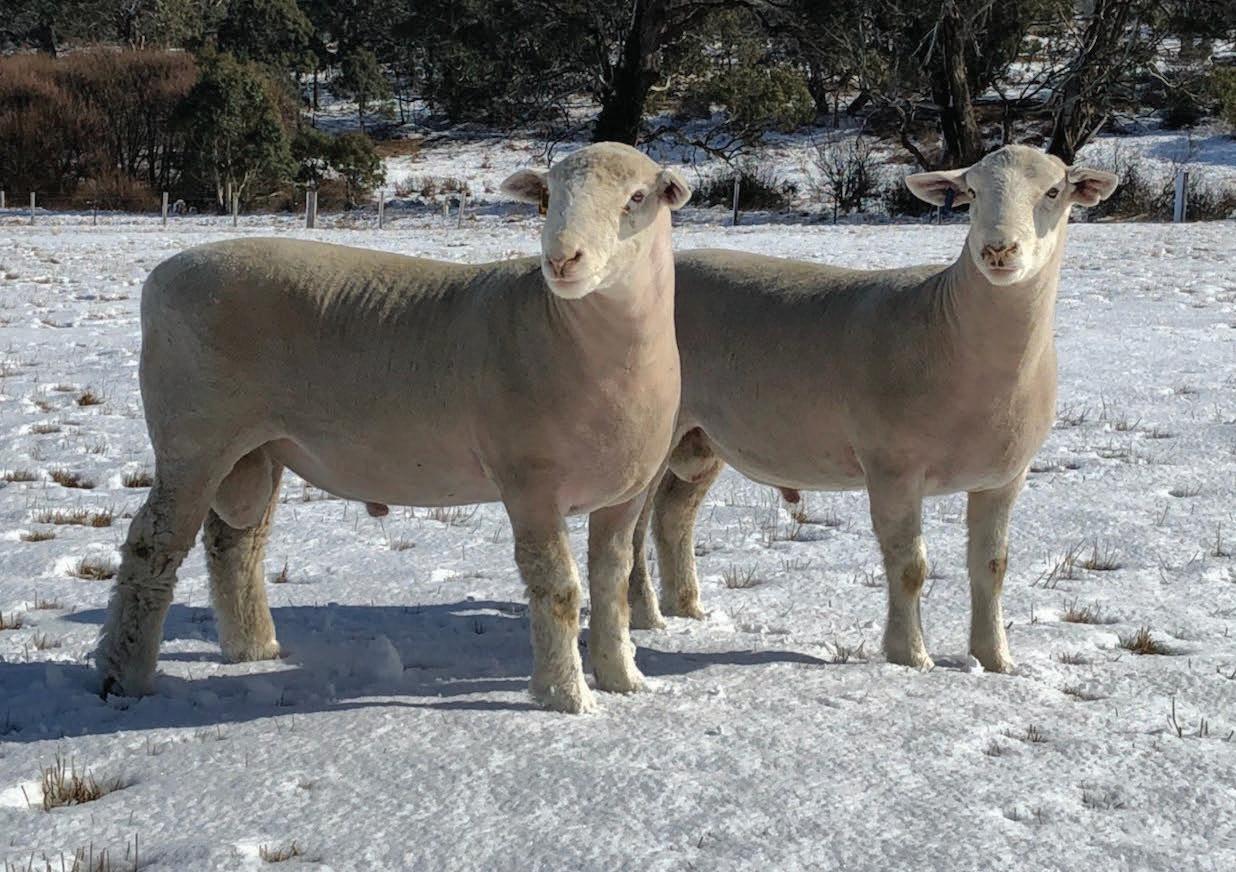
With a good Monaro Spring on the doorstep, sheep producers will welcome the return of sales in Cooma with the first sale to be held on Tuesday November 1 (Melbourne Cup Day).
Sales will then continue on a fortnightly schedule with the last sale prior to Christmas being on December 132. The first sale in the New Year will at this stage be on January 10, 2023.
Producers will be able to sell all categories and drafts of crossbred lambs, mutton and restocker sheep at Cooma Saleyards at competitive prices.

Good numbers are anticipated and as we all know; numbers attract buyers of both fat and store lines, so support your local centre.
Contact the local agents Nutrien, Elders Ltd and Boller and Company.
Chilean Needle Grass is a Weed of National Significance due to its invasive qualities and is closely related to Serrated Tussock. It affects both sown pasture and native grassland. It can be difficult to identify due to its similar appearance Due to to other grass species such as Fescues. It has recently been identified at a number of locations across the Monaro and Brett Jones from the council biosecurity team believes it has been here for decades.
While it is a Weed of National Significance and the scientific literature describes it as an unpalatable grass capable of reducing farm productivity and causing carcass damage to stock, Brett Jones said they have not seen these negative impacts on Monaro properties on which the grass is present.

“In reality, it’s a palatable grass that remains green throughout winter and is preferentially grazed over other grasses. The stories of carcase damage from the seeds don’t seem to play out in reality, unlike the damage that we see every year from corkscrew and barley grass,” Mr Jones said.
“It is very invasive and we need to be wary of that, as it will invade our high
quality native grasslands. It’s extremely difficult to identify amongst other pasture species, and contrary to popular belief it has been around on the Monaro for at least 20 to 30 years and is quite well entrenched in some places.”

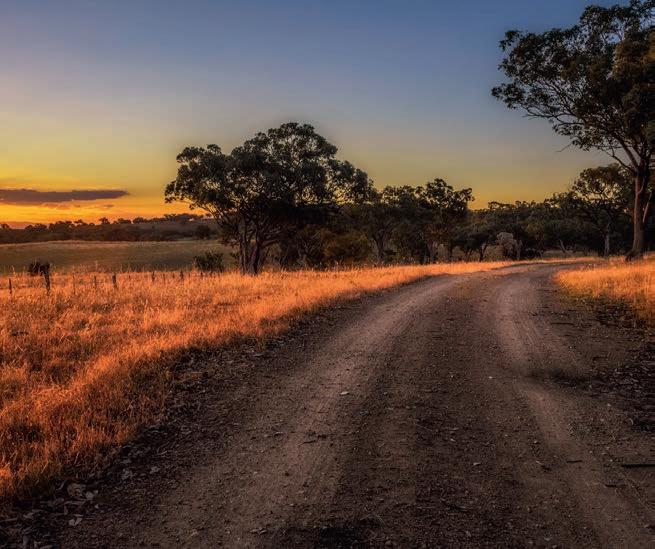
Upper Snowy Landcare Network President Margaret McKinnon believes further preventative measures should be put in place.
“I think there should be quarantine measures put in place for properties that have Chilean Needle Grass. We don’t have huge infestations of it in our region so now is the time to jump out in front of it and deal with it while we can. Imagine if we had this opportunity with African Lovegrass, where we’d be now,” Ms McKinnon said.
While difficult to distinguish from fescue, Chilean Needle grass can be identified by the corona at the join of the seed body and the seed awn. At this time of year, it takes on a yellowish colour and also has course hairs on both sides of the blade, which fescue does not have.
Control methods for Chilean Needle Grass include checking with local contacts for advice on herbicide, use short-duration high-intensity grazing and rotational cropping.
If you find Chilean Needle Grass on your property, it is important to contact Council Biosecurity on 1300 345 345.
Primary producers affected by the February-March flooding event in NSW this year can now access additional funding of up to $100,000 thanks to a jointly funded program developed by the Commonwealth and NSW governments.

The $100 million Critical Producer Grant Program will provide primary producers hardest hit by floods with support to restore production systems and rebuild essential infrastructure to a standard that will better withstand future disasters.
Federal Minister for Emergency Management Senator the Hon Murray Watt said the Australian and New South Wales Governments remain committed to the recovery of floodaffected primary producers.
“We recognise that the farmers and individual families who put food and fibre on our plates have been significantly impacted by these immense flood events,” Minister Watt said.
“These grants will help play an important role in supporting those in the sector who are trying to rebuild and continue producing after overwhelming losses.
“We will continue to work with and listen to all levels of government to provide support where and when it’s needed over the time it takes to recover.”
NSW Minister for Agriculture Dugald Saunders said the grants will help primary producers in the key agriculture, horticulture, forestry and aquaculture industries get their businesses back on track.
“This package is part of more than $3.5 billion committed by both governments to help communities and industries recover from the devastation of repeated flooding events over the past year,” Mr Saunders said.
“The grants will provide the direct and much-needed assistance many primary producers need to recover, so they
can get on with producing the vital products that Australia and the rest of the world relies on.
“Our state’s agriculture, horticulture, forestry and aquaculture industries have played an essential role in building a strong and thriving economy, and we are committed to keeping our farmers and key regional industries in business.”
Funding is available to primary producers for:
• Dairy – up to $100,000;
• E xtensive livestock, broadacre cropping, turf production and perennial tree crops – up to $75,000;



• A piary, poultry and pork –up to $50,000;
• Aquaculture, commercial fishers and other horticulture such as berries, vegetables, vine crops, cut flowers and nurseries – up to $30,000, and
• Private native forests and timber plantations – up to $10,000.
The Department of Regional NSW has comprehensively reviewed the impacts from the floods and consulted with industry to ensure this funding meets the unique recovery needs of each of the impacted sectors.
The Critical Producer Grant Program is designed to complement existing flood- recovery measures for individuals and businesses in disasterdeclared regions, many of which are co-funded by the Australian and NSW governments under the Disaster Recovery Funding Arrangements.
Applications for the Critical Producer Grant program are now open.
For more information and to apply, visit: nsw.gov.au/criticalproducergrant
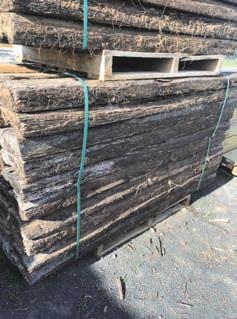
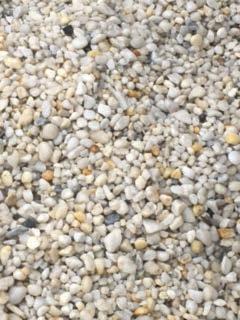
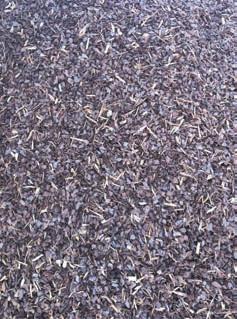



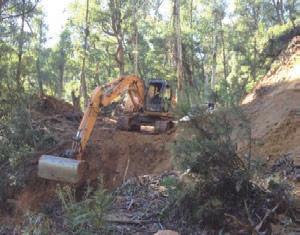
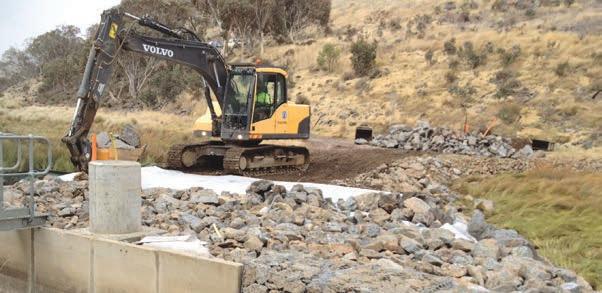
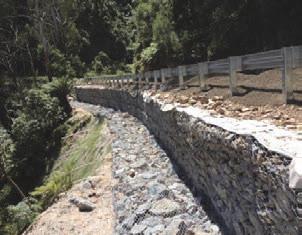
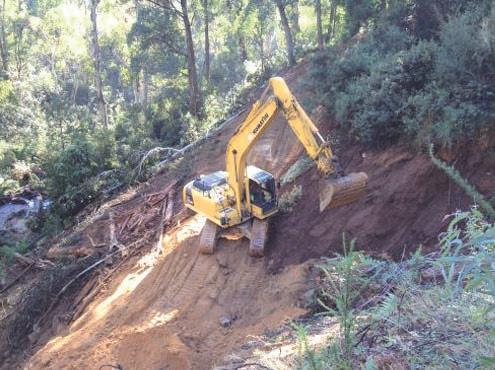
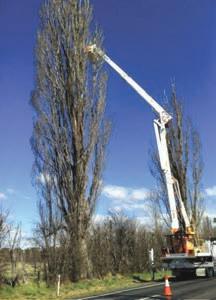


Basic training is the cornerstone of many professions.
In the bush, many successful business people have started their working lives sweeping the board or otherwise picking up fleeces.
These days, the skills being taught in shearing sheds still offer that stepping stone to a satisfying career, but there is probably more emphasis on efficiency and workers’ comfort.
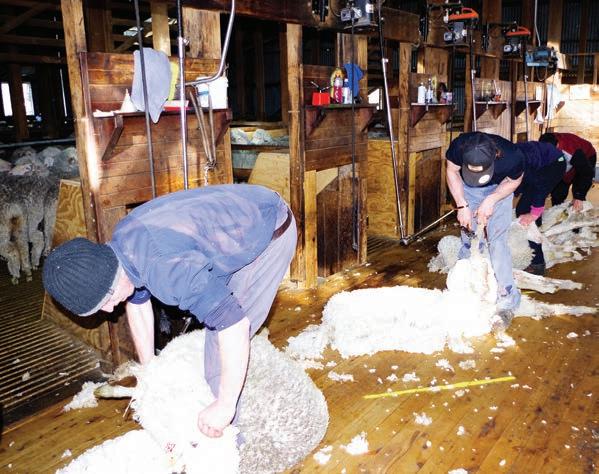
Shearing is hard yakka, there is no denying that.
But skills being taught on the Monaro are helping new shearers develop techniques which will increase their longevity in the industry and retain better health.
A collaboration between Australian Wool Innovation (AWI) and the Coolringdon Trust, is allowing shearers and wool handlers to learn from the experts.
Co-ordinated by local shearing contractor, Mick Schofield, the schools are attracting increasing numbers for school-aged participants, plus others looking to get a start in the wool industry.
Young shearers are stepped through the basics, such as foot placement, correct position in relation to the part of the sheep
being shorn, timing, and correct angles for handpieces to lessen any risk of injury to the sheep and shearer.
These skills were explained in a Saturday school held in September.
There is also a midweek school, or gear night, where shearers are coached in the maintenance and setup of handpieces, grinders and combs. Proper maintenance and use will prolong the life of the equipment.
Those wanting to learn wool handling skills are also catered for.


Skills to be learned at the schools include skirting fleeces, tossing fleeces, clearing the board, baling wool, correct allocations of pieces and stains and moving sheep into pens and yards.

Mr Schofield said the wool industry has given many, many locals a great start in life.
He said the average wages paid allow a good living to be made while people are learning on the job.
The skills acquired during training can be transported to other fields of work, sometimes enabling the establishment of new businesses
Monaro Country Lavender Co- op Ltd. is approaching its 30th year, and lavender farming is only on the increase across the local region.
Currently the Co-op is working with the Australian Lavender Growers Association and AgriFutures Australia to develop methods to improve production and viability of the industry.
AgriFutures has adopted lavender as one their emerging industries for the next ten years, so work will continue in helping to improve production so the annual importation of 20 tonnes of lavender oil per year can be replaced by locally produced oil.
Monaro Country Lavender is also working on developing a felted woollen mat to act as a mulch for plants that would utilise the off cuts from shearing, and continues to develop the concept of a Lavender Trail from Bredbo to Delegate.

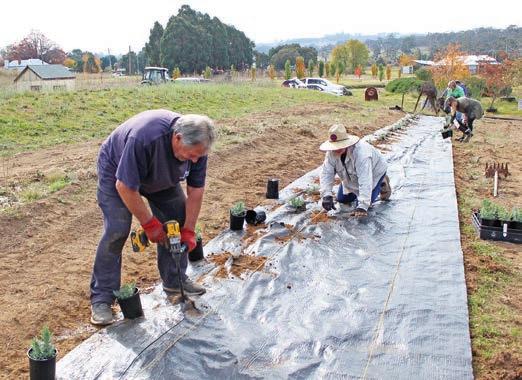
“New plantings on the Bombala Railway Park, funded through the Boco Rock Community Enhancement Fund, are going well and should have their first flowering this year,” MCL President, Rob Cash said.
“This is particularly exciting for the lavender jam making enterprise which will utilise some of these flowers.”




Rob explains that the Monaro Country Lavender Co-Op, which calls Bombala home but is expanding across the region, has achieved a remarkable amount over its 30 years of operation.
He gives the following list of highlights and achievements -
• Holding the first ever Lavender Conference and the first Lavender Conference to focus on the production of lavender essential oil at Bombala.
• E stablishing Lavender House and the first Bombala Visitor Information Centre on the Railway Land at Bombala.
• Working with the then Bombala Council to establish lavender gardens on the Railway Land, and assisting them to promote tourism to the Bombala region.



• Working with community groups such Bombala Lions, Bombala and District Garden Club, Bombala Historic Engine and Machinery Society and Friends of the Railway to assist with maintaining and promoting the Railway Precinct.
• Working with the broader lavender industry to develop better production methods.
• Development of new packaging for both essential oil and lavender mist which has been well received. Rob also praised both past and present members for their willingness to share ideas and knowledge, and paid particular tribute to Jan Illingworth who has been a mainstay of the association from the very beginning.
“Our 30th Anniversary Celebrations are planned for next year, including special workshops, presentations and a dinner,” Rob said.
“The group will also be part of the events to be held prior to next year’s Bombala Show to celebrate all things gardening.”
MCL’s three hour presentation, ‘Lavender from Plant to Product’, will be the opening event, and is sure to foster interest in this special plant that is so much a part of Bombala. Monaro Country Lavender is keen to hear from farmers who would like to be part of the woollen mat project, and also prospective growers keen to take advantage of the exciting renewed interest in growing lavender commercially.
Contact cash@snowy.net.au for more information
The team at Hazeldean is preparing for the upcoming annual ram sale on Friday, October 21 when they will offer 280 highperformance Merino and poll Merino rams with excellent structure and visually pleasing phenotypes. An open day will be held on October 16 for all to come and view rams.

This year’s sale team are very well grown, sound bodied rams ready to impart their high performing genetics to your flock.
“It’s fantastic to see the industry in a rebuild phase at the moment, most people on the eastern sea board are working to bolster flock numbers to match their grass situations,” says stud co-owner Bea Litchfield.
The Hazeldean Merino Stud was established in 1865. These many years of generational experience have resulted in top performing genetics. Fine micron wool is produced from fast growing Merinos of moderate body size, making their sires a solid investment for any sheep or wool enterprise.

Hazeldean Merinos run a 11,000-head commercial flock, which produce an average wool fibre diameter of 18.1 micron and cut per head of 7.5kg in commercial conditions at Cooma.
Frequently participating in sire evaluation programs, Hazeldean results speak for themselves.
“With the benchmarking trials taking place on one farm, in the same conditions for all sheep, we can be confident in the results indicating the high performance of our rams,” says Bea.
The use of evaluations like this over many years has allowed Hazeldean to fine tune their breeding.
“Sire evaluations and other similar programs allow us to produce high performing rams for our commercial clients. The genetics do the talking and we are confident in our sires.


“The extensive analysis we do means we can make fast genetic gains in the direction we want to go.
“We have always focussed on a strong balance between performance data and functionality. We aim to provide the
opportunity for our clients to use our rams to advance their own flocks for wool cut, fine fibre diameter, plain bodies, good growth, fertility and excellent constitution.”
This year’s Hazeldean ram team will complement a variety of enterprises and mixes of enterprises by creating a productive, profitable ewe base to maximise fibre production. The performance of these rams is industry leading with a large proportion of the rams in the top 5-10 percent of industry Merino Production + Index and the Dual Purpose + Index.
Always being at the forefront of change, Hazeldean is one of the few studs who has an independent vet check over the sale team and for reproductive soundness. Tom Grahame of Coolac vets conducts this aiming to further increase the reliability of ram selectino decisions.
Standout sires in the catalogue include: Hazeldean Leonardo 3368, Hazeldean 15.3368, grandsons of the Famous Hazeldean Hugh, Nerstane 404 and young upcoming Hazeldean sires Hazeldean 18.551 and 18.2529.
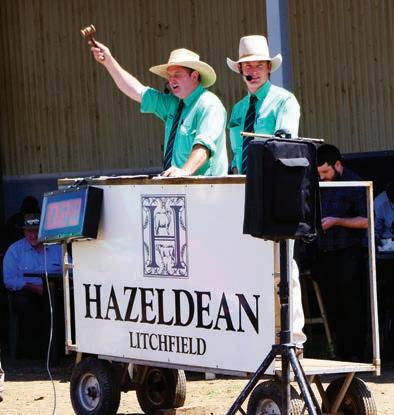
Hazeldean invite all local interested sheep breeders to come along and have a look on the inspection day or sale day.
More information at www.hazeldean.com.au or call Bea Litchfield on 0427 933 103.
The Boudjah Flock has settled in well to its new home at Moles Station, Kybeyan.

The long wet has continued which has been very challenging for us all. This is our first year ever without a winter crop so the 2022 sale rams have been supplemented with about 250g of Ambos 14 percent sheep nuts since late July.
It is very satisfying to see how well the Boudjah bred One Oak ewe wool withstood almost 1.4m of rain since their last August shearing.
We achieved 18.5 micron, 80.8 percent yield, 102 SL, 51 SS and a clean sale price of 17.93c per kg.
The highlight of the year for the Boudjah Stud is the performance of Boudjah 074 who was entered into a Sire Evaluation at Bathurst in early 2021.
His progeny’s (Boudjah 180074) performance as measured by MerinoLink saw it produce results as a trait leader in wool YFD (15.4μm), weight WWT (21.8kg) as well as wool quality visuals of FLROT (1.0), DUST (1.2) and WEATH (1.6).
MerinoLink also recorded a flock breeding value of YFD -1.5mm and WWT 1.5kg. For more information, visit merinosuperiorsires.com.au.
Boudjah has recently purchased a new sire Tara Park Gary, who is a son of Boudjah 074. Tara Park Gary has 14.8 micron wool and is 105kg still with his milk teeth.
The Boudjah Quality Assurance Process has continued with the 2022 Sale Rams.
This involves regular assessment of weight gain, an annual vet check prior to sale, brucellosis accreditation,
annual Gudair vaccination, comprehensive wool testing and Rick Power’s annual assessment of the meat and fat characteristics of the flock.

These results are displayed on our website www.boudjahmerinos.com.au
We look forward to seeing you all on Sunday October 16 for the preview, and on Tuesday October 18 for sale day at Cooma Showground.
Silvan is a leader in the design of three point linkage sprayers and the largest Australasian manufacturer of bestin-class linkage sprayers and related machinery. With over fifty years experience, we can advise on a sprayer to match your tractor and application, whether for one hectare or one thousand.

Silvan’s range of sprayers can be equipped to suit herbicide, insecticide and fungicide applications in a range of crops including orchards, vineyards, vegetables, sugar cane and pasture production. With an extensive range of fully galvanised booms, hose reels and control options, you can customise to your application.
silvan.com.au
DON’T LET WEEDS OVERRUN YOUR PASTURE - CONTROL THEM NOW!


The highlight of Monaro Farming Systems (MFS) activities in recent months has been the successful delivery of its first Agricultural Technology Symposium in Cooma on August 3.
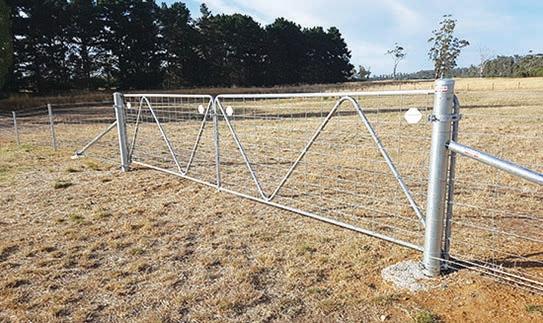
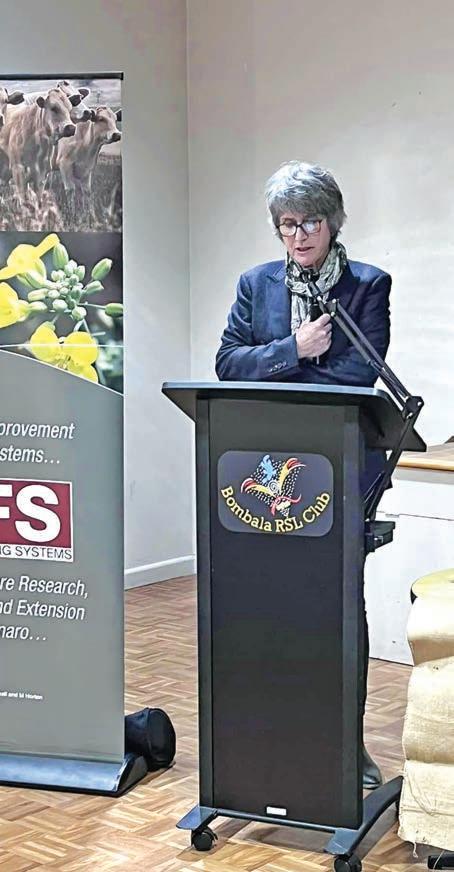
MFS were able to bring a range of technologies together, highlighting new and innovative farming software, labour efficiency, drone/robotics, remote sensing, connectivity, animal health and management, livestock handling, soil heath and pasture/fodder.
“With the support of Agrifutures, together with our sponsors and exhibitors, we provided an avenue for producers to hear from leading experts on technologies available to make positive impact on their future business decisions,” MFS Executive Officer, Frances Lomas said.
Producers were able to connect and network with other farmers to gain added insight on how technology can improve productivity and farm efficiencies.

MFS have also delivered several workshops in the past few months including communication and resilience between farming families, drought preparedness and seasonal outlook.
“We recently trialled an evening event, comprising of a Spring Dinner and AGM,” Ms Lomas said.
The evening, held at Club Bombala, attracted over fifty guests, on hand to hear from Angus Gidley-Baird, Senior Animal Protein Analyst, RaboResearch Food & Agribusiness, Rabobank being a major sponsor for the evening, a Seasonal Outlook delivered by GrazProphet and a presentation from DPI as part of the MLA funded CN30 program.
“We are delighted to welcome our newly appointed Chair, Mandy Horton who replaces John Murdoch,” Ms Lomas continued.
“John will remain on the board in the position of Vice Chair to ensure corporate knowledge is maintained and a smooth transition for Mandy.
“We farewelled past producer members, Andrew Rolfe and Nancy Spoljaric and warmly welcomed Lisa Phillips and Darcy Larritt.”
MFS continues to partnership with key stakeholders to progress trial sites and case studies, particularly with MLA and DPI.
MFS have called for expressions of interest from within its membership database to find those who are keen to participate in a case study to determine the potential for properties to become carbon neutral.
The study will entail obtaining a detailed understanding of the farming enterprise to obtain estimates of the current greenhouse gas (GHG) emissions.
It will explore what options are available to mitigate the GHG emission using a range of options including alternate forages, legumes, supplements and/or intensification vs deintensification processes.
Having determined property level GHG emissions the study will then determine the extent emissions can be potentially offset through sequestration of carbon in soil and trees.
In addition, all proposed scenarios will consider the extent that they are achievable/practical, their cost:benefit ratio along with impacts to farm productivity. MFS will continue to work with DPI to progress this study.
MFS has transitioned into a Knowledge Broker role as part of the Southern NSW Innovation Hub and will continue to identify priority issues and the development of collaborative funding bids to establish multidisciplinary teams to undertake activities and solutions.






“We will continue to provide our members and industry with updates and outcomes associated with all MFS activities,” Ms Lomas said.
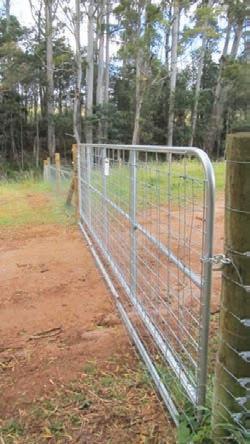

“If you are interested in hearing more about our work, becoming a member or perhaps our sponsorship packages please do not hesitate to get in touch.”
MFS can be contacted through Frances Lomas, Executive Officer on executive@monarofs.com.au
GREENDALE MERINOS on property ram sale Saturday October 22 at 11am at Willarney 850 Maffra Road, Cooma.

We continually strive to improve our genetics and prove their performances are well above industry averages, with our genetics being at the top of the industry.
This can be strongly proven using the many industry comparisons available.
Greendale uses a range of industry measures to benchmark the flock giving us the best possible comparisons to choose our and your future genetics.
Breeding is a long-term investment –Genetic gain is permanent and cumulative each year in a self-replacing flock.
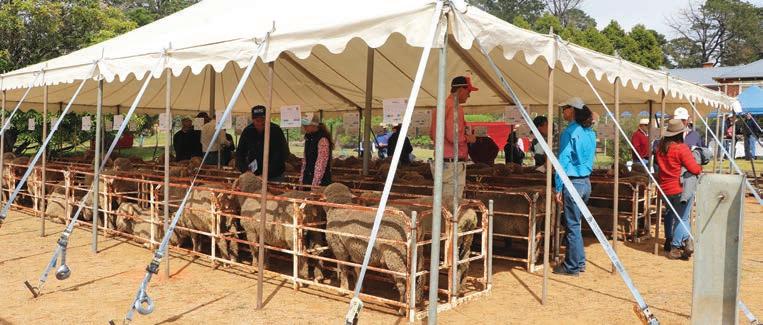
All sale lots will be available on Greendale Merinos website www.greendalemerinos.com.au or If you would like to keep up to date with activities and results of our performances.
Follow Greendale Merinos on Instagram at @greendalemerinos All rams will also be offered for sale via the online selling platform AuctionsPlus.
Any enquiries contact Alan McGufficke on m 0429 448 078.
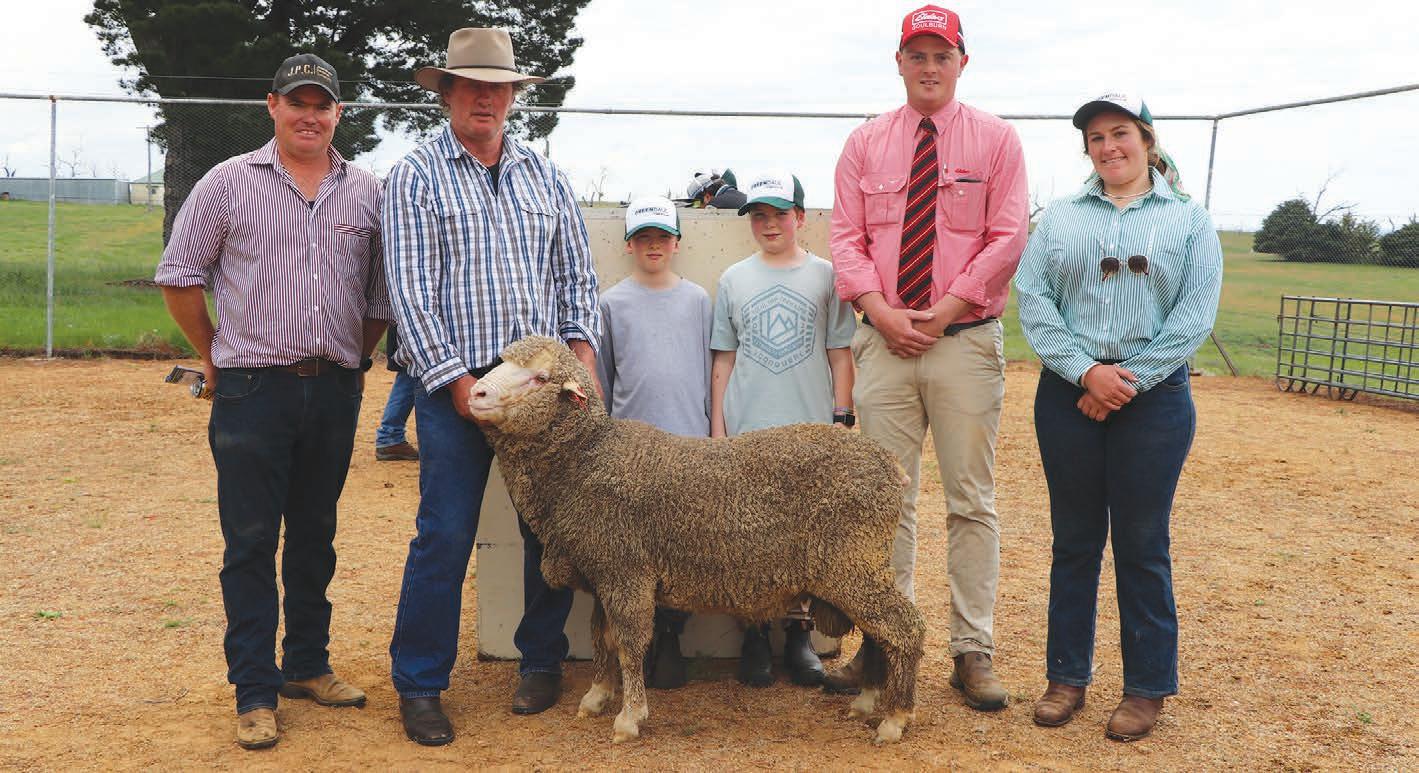
Snowy Truffles is home to Australia’s highest altitude planting farm with two locations based in Jindabyne and both above 1,000 metres altitude.
One truffle farm is located on the Alpine Way heading towards the Thredbo Ski Resort and the other is located on Avonside Alpine Estate in Avonside which sits at 1,200 meters altitude.

Both owned and operated by Jindabyne local man Olivier Kapetanakos, also known to resort staff as the Truffle Man, Olivier spends hours with his truffle hunting cattle dog Kelly to find and dig for these black truffle delicacies.
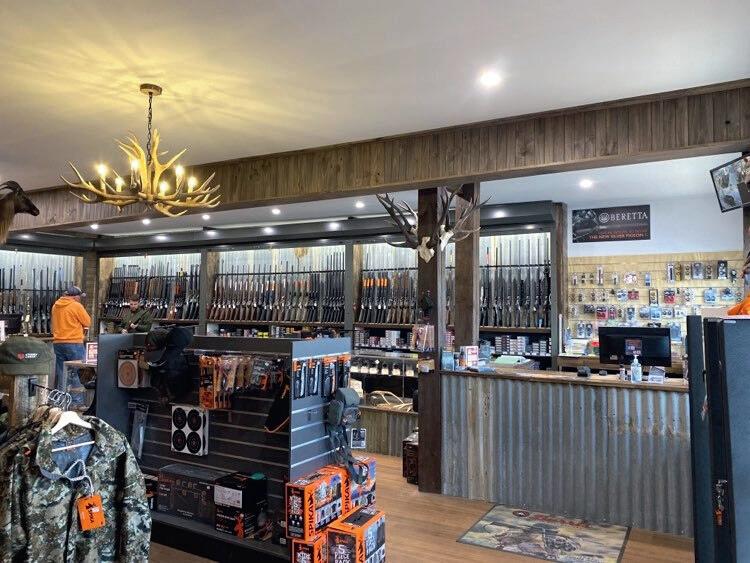


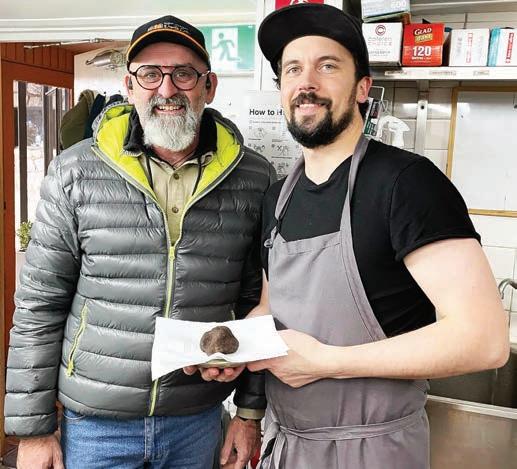
Once dug up, cleaned and weighed the Truffle Man gets to work distributing his truffles amongst the locals, visitors and local restaurants and cafes including Birchwood Jindabyne and the Denman in Thredbo.
Distributers as far as Sydney and Griffith purchase from Snowy Truffle s they are always guaranteed a great product.
Olivier said this year’s 2022 truffle season will be one remembered as a good and successful season for both the yield and quality of the truffles.
“Truffles are an affordable seasonal product that should be enjoyed fresh”, he said.
To get a taste of the highest grown truffles from Snowy Truffles contact Olivier on 0400 868 683 or visit his Facebook page, Snowy Truffles, for more information.
Local Livestock Agent Damian Roach was recently presented with the 2022 Livestock Rising Talent Award at the Nutrien Ag Solutions North East – Southern Division’s livestock conference, held in Canberra on July 29.
A familiar face to anyone in the local livestock scene, Damian has worked as a local livestock agent for five years in the Monaro region and a further two in Wagga Wagga, having completed his Bachelor of Agriculture there.
“It’s a really big honour and a surprising achivement to have received this award,” He said.
“Nutrien Ag Solutions is a big company so It’s good to be recognized, not just for myself but for our area.
“But of course a lot of the recognition has to also go to our team, Gary and Myles and the other local branches.”
Damian was presented with the award which recognized him as a
young and progressive livestock agent, and with spring sales coming up, he said it is a good time for the industry, both in the Monaro and across the state.
“Things are looking really good for our region, we’ve got good bulk feed and the only thing we could probably do with is a little more sunlight.
“The cattle market is looking good. The sheep market is in a little bit of limbo with some of the impacts of
Covid, but generally speaking, the Monaro is sitting pretty right now and prices are generally looking good for all of NSW as we come into Spring.”
Damien Roach is pictured above (centre) on the catwalks at Cooma Saleyards.
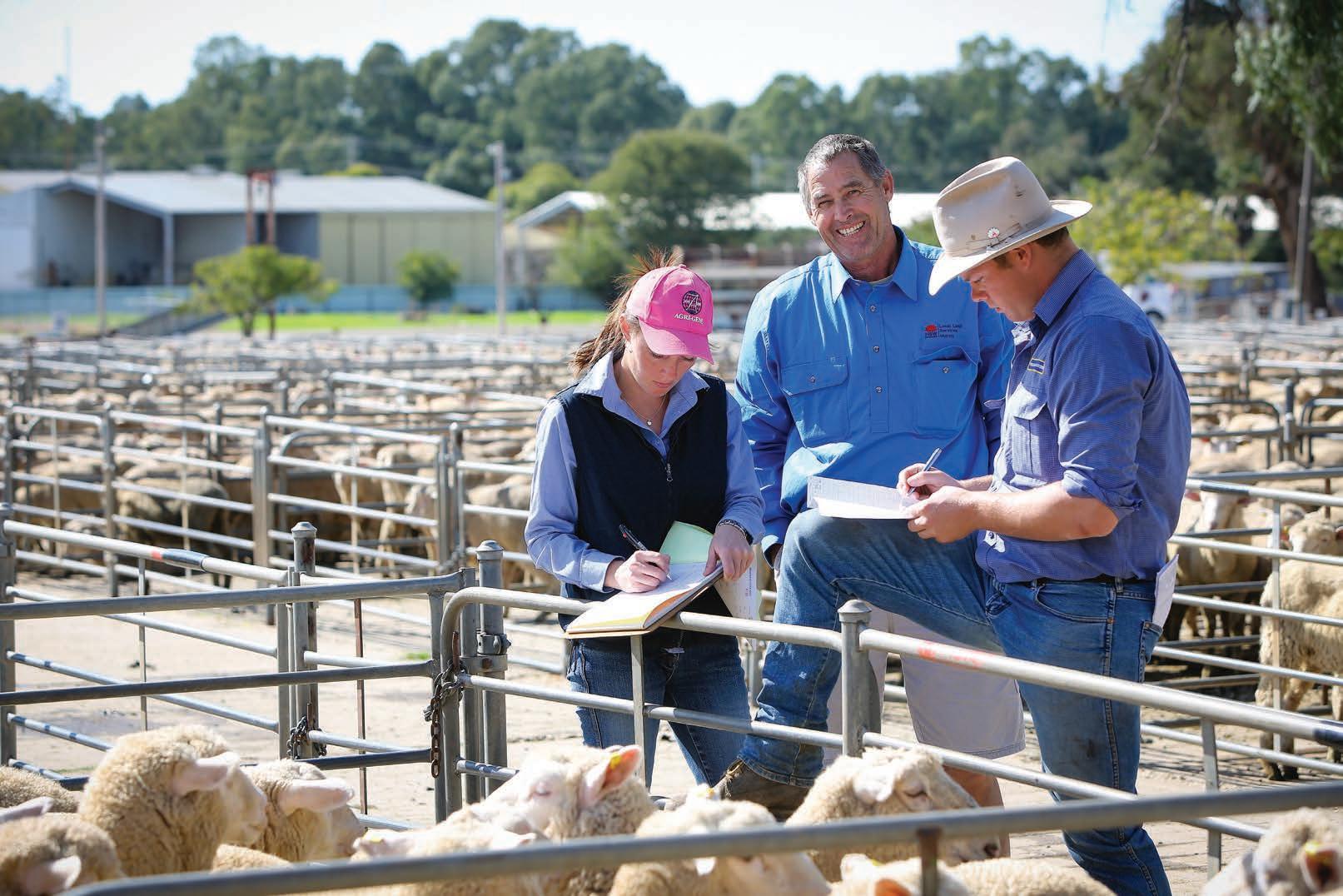

Our programs and partnerships grow farm productivity and healthy environments and we play a vital role in helping to protect against pests, diseases and environmental threats.
We connect our customers with the best service, advice and networks.
Local Land Services offers a range of specialised services, tailored for each community, industry and environment. We understand the needs of our communities we work with and we are well placed to deliver services that address local needs.
Our team is here when it matters, on the ground helping you with knowledge, networks and local

The Southern Australia Livestock Research Council (SALRC) was excited to host eight young Ag industry professionals at the Livestock 2022 Conference in Melbourne on September 6-7, including the Monaro’s own Miranda McGufficke.
With the main theme of the conference focused on the identification of future trends impacting our livestock industries, SALRC identified the importance of getting younger producers, researchers and extension personnel in the room to help shape conversations.
“We were delighted with the valuable input from the scholarship recipients across the two days and asked each of them to share what they gained from attending the conference,” an SALRC spokesperson said.
Miranda McGufficke is part of family run commercial merino and seedstock enterprise Greendale Merinos near Cooma and currently studying a Bachelor of Animal Science, majoring in Livestock Production, at the University of New England.






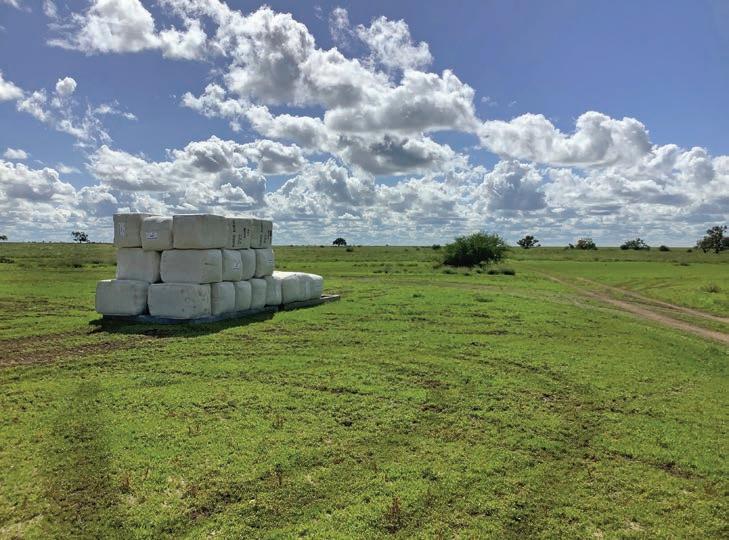

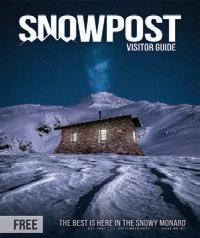


“I would like to express my sincere grat itude and appreciation for being invited to attend the Southern Australia Research Livestock Council – future producer’s conference on an industry scholarship,” Ms McGufficke said

“It was an invaluable opportunity that I feel fortunate to have attended and be able to collaborate with industry professionals and progressive producers. Having access to keynote leaders and professionals will greatly progress my future studies
and ambitions. As a young person I find it a great privilege to be involved and encouraged to participate in these progression conversations. I hope this opportunity continues for other young people.”
Attendance of these eight young Ag professionals at the Livestock 2022 Conference would not have been possible without the generous sponsorship from regional Ag businesses. Both SALRC and the regional scholarship recipients would like to extend their thanks to the regional scholarship sponsors: RIST (Rural Industries and Skills Training Centre), Rennylea Pastoral Company, T.A. Field Estates, AG Agronomics, Meridian Agriculture, Australian Wool Innovation and the South Australian Blueprint.

The Bushfire Danger Period for the region officially began on Saturday, October 1 and the Rural Fire Service is reminding people to be prepared and that they will need a permit if they wish to burn.

The statutory Bush Fire Danger Period runs from October 1 to March 31; however, it may vary due to local conditions.
Monaro RFS Inspector Rein Peet said it is important to be prepared for fire season despite the continuing wet weather.

“While they have just announced another La Nina which likely means a wetter summer, it is important to be prepared as there is still a risk, particularly of grass fires, especially as the summer months continue and the grasses cure,” Inspector Peet said.

“Even now, as people are doing quite a bit of burning before the fire danger period begins, we’re seeing some of these
planned burns getting away from people, even with very little wind.”
A Fire Permit is required for burning activities during the Bush Fire Danger Period in Rural Fire districts and at all times in Fire and Rescue districts around the state. Fire Permits help ensure fire is used safely and minimise the danger to you, your property and the community.
Permits can be obtained through your local brigade captain or by contacting the Monaro Fire Control Centre in Cooma on (02) 6455 0455.
Another thing to be aware of as we come into the fire danger period is the new fire danger ratings being implemented across the state, as seen in the image above.
Despite the high rainfall seen across the region and the state, it is still important to plan and prepare for the fire danger period and ensure you and your family stay safe this summer.
The Rural Financial Counselling Service is encouraging Snowy Monaro based primary producers and small business owners to attend a series of workshops to learn more about recognising and alleviating stress.
The RFCS is joining forces with Snowy Monaro Regional Council and Cooma Rotary Club to deliver five Strengthening You and Your Finances workshops across the region.
Each workshop will feature a special talk from Warren Davies – The Unbreakable Farmer, and helpful strategies for managing stress from trauma counsellor Colleen Weir.
Warren and Colleen will then join local finance and legal experts on a question and answer panel, giving attendees the opportunity to ask questions and share their rural and financial experiences.
There will be discounted services vouchers and giveaways available at each workshop including signed copies of the Barefoot Investor’s best-selling book.
The workshops are offered by the Rural Financial Counselling Service NSW, in
collaboration with the Snowy Monaro Regional Council and funded through the generosity of the Rotary Bushfire Recovery Project funds for primary producers and small business owners.
A variety of topics will be covered on the day including resilience, understanding insurance papers and the keys to applying for finance to name a few. There will be discounted service vouchers and giveaways available at each workshop.
Workshops will be held throughout October in the following locations:
Bredbo Memorial Hall – Monday October 24 from 4.30pm to 7pm.
Cooma Ex-Services Club – Tuesday October 25 from 7am to 9.30am.
Adaminaby Bowling Club – Tuesday October 25 from 4.30pm to 7pm.
Nimmitabel Memorial Hall – Wednesday October 26 – from 7am to 9.30am.
Club Bombala – Wednesday October 26 –from 4.30pm to 7pm.
Snowy Monaro Regional Council Resource and Waste Services is continuing to investigate areas throughout the region that would be suitable for the placement of Bank of Bins servicing for rural residents.
Residents in the Michelago region have been utilising the Bank of Bins that opened to registered users at the old RFS Shed in August last year.
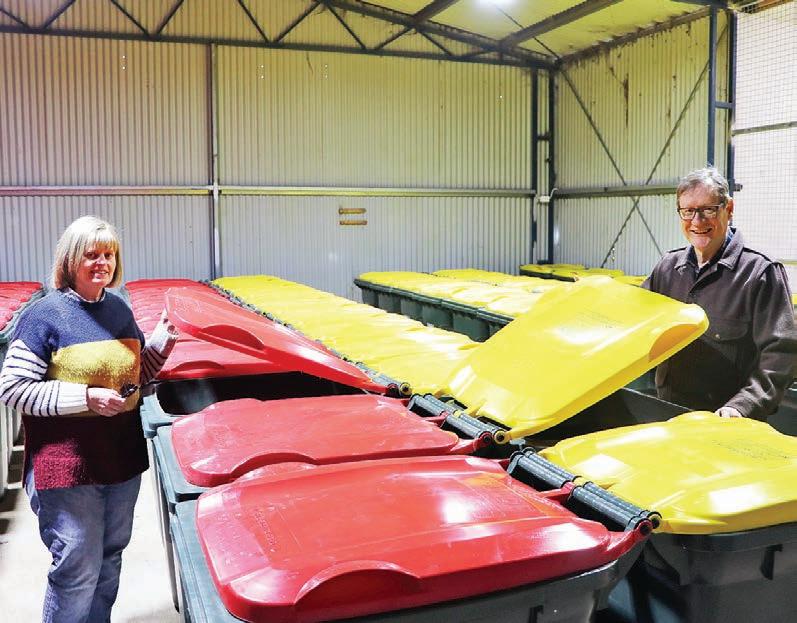
The service provides rural residents with access to waste disposal at more convenient times, and does not require keys, so residents can arrange and use the service without the need to travel to Cooma.

“The Michelago Bank of Bins is a significant investment in a sustainable future for the
wider Michelago region, ensuring the rural community has access to safe, clean, efficient and modern waste disposal facilities now and into the future,” a SMRC spokesperson said.
Council Resource and Waste Services are investigating areas within the region for possible extensions to kerbside collections that would be suitable for the Bank of Bins service.
For more information please contact Council on 1300 345 345, council@ snowymonaro.nsw.gov.au, or through Facebook and Instagram.
AWI released in June its new three-year Strategic Plan after consulting widely with woolgrowers and their representatives to ensure industry views and priorities are incorporated into the plan.
AWI is the research, development and marketing organisation for the Australian wool industry. The company’s new Strategic Plan, effective from 1 July 2022, outlines the company’s strategic direction and targets for the three financial years 2022/23 to 2024/25.
AWI Chairman Jock Laurie says AWI will continue to focus on turning its investments into returns for Australian woolgrowers.
“Our commitment to enhance the profitability, international competitiveness and sustainability of the Australian wool industry will never change,” Mr Laurie said.
“Change though has been the one constant in the last couple of years on so many levels. As a grower myself, I know only too well the multitude of challenges that we face from having enough good quality shearers and shed staff, to changing growing conditions and soaring input costs.
“Australian wool has a bright future and over the next three years AWI will work even harder to maximise the opportunities and meet the challenges facing woolgrowers.”
AWI Chairman, Jock Laurie
“The Strategic Plan has been guided by feedback from our major stakeholders directly and also through the Wool Industry Consultative Panel (WICP) and the Wool Consultation Group (WCG). The Australian Government as the single largest contributor of funds to our work has also played a vital and collaborative role in framing this plan.”
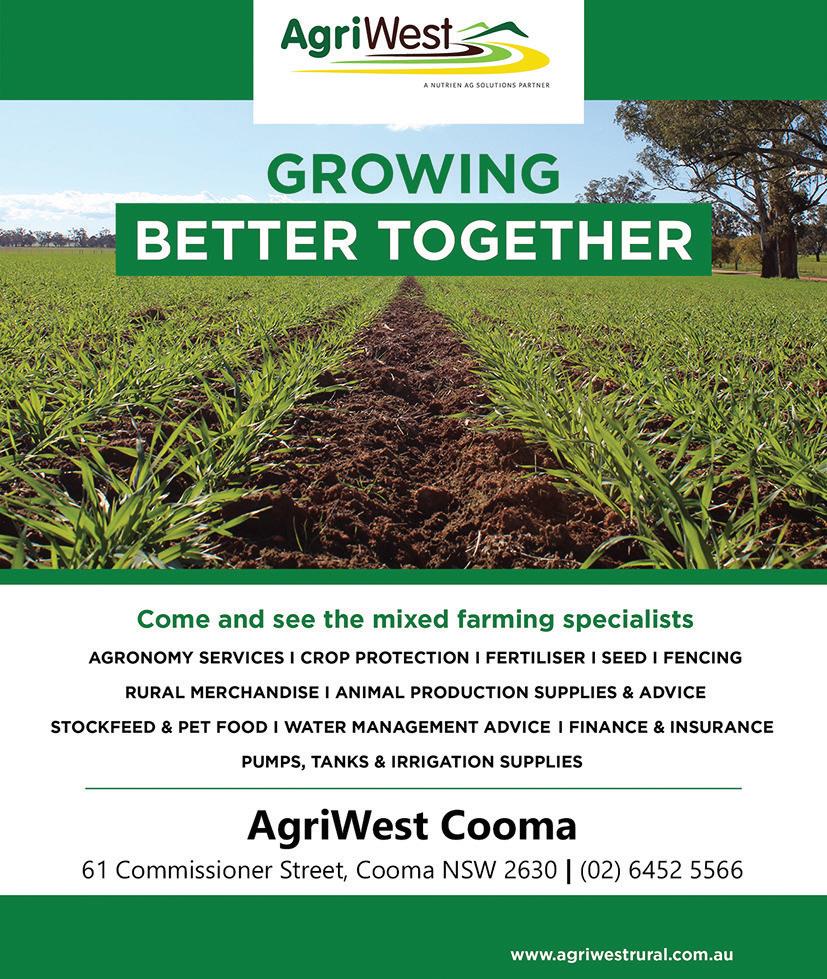
In preparing the Strategic Plan, AWI considered the challenges and opportunities facing the Australian wool industry – see opposite page. The company also considered the strategic plans of the broader Australian wool and agricultural industries, such as the Wool 2030 Strategy and the Sheep Sustainability Framework.
In June, AWI also published its Annual Operating Plan for the 2022/23 financial year, which outlines the company’s main investment activities for the year, consistent with the new Strategic Plan. Details of the progress against the targets in the Annual Operating Plan are published twice-yearly on the AWI website as well as in the AWI Annual Report and the AWI Annual Performance Report.
More information: The AWI Strategic Plan 2022-25 and the Annual Operating Plan 2022/23 are available at www.wool.com/consultation.

When the Snowy Monaro Regional Council’s Draft Rural Land Use Strategy was put on public exhibition during 2020 and 2021, there was a flood of submissions voicing concerns from local landholders.
Opposition to parts of the Draft Strategy was so strong both in written submissions and during community consultation, that the review process is still underway, and considerable amendments will be made to the strategy.
Amongst concerns from landholders was rezoning large tracts of land to environmental management (E3) zones, potentially threatening owners’ ability to farm, reduce the value of land, increase the risk from bushfires and present difficulties in controlling feral animals and weeds.
“Council staff have been working hard to review all submissions and revise the draft Rural Land Use Strategy in response to these submissions,” a Council spokesperson said.
“As a result, the draft Rural Land Use Strategy has been substantially re-drafted.” Snowy Monaro Regional Council has prepared the Rural Land Use Strategy to guide rural land use planning over the next 20 years.
The Strategy will inform the preparation of a consolidated Local
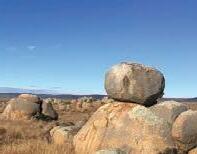
Environmental Plan (LEP) for the amalgamated local government areas of Bombala, Cooma-Monaro and Snowy River.
The Rural Land Use Strategy provides a framework to guide growth and development within the rural lands of the Snowy Monaro Region to ensure the Snowy Monaro’s economy and environment are protected.
The Strategy responds to the diversity in rural landscapes and established rural industries within the LGA, including agriculture, forestry and tourism.
Council says it works to balance the interests of agriculture and tourism, ensuring that both can operate without significant impacts on the other as well as elevate the significant environmental values that exist within the region.
The Strategy acknowledges the established major industries but also the emerging industries of renewable energy.
Some key issues revolve around an appropriate minimum lot size, what is primary production farming land, lot averaging provisions and preserving the rural landscape.
“The revised draft Rural Land Use Strategy is expected to be reported to Council before the end of the year to be placed on public exhibition for another eight weeks,” the spokesperson said.
The two wool industry service providers will share a single electronic specification by the end of 2022.
AWEX Chief Executive Mark Grave says it is important that the two notfor-profit companies work together for the mutual benefit of the industry.
“AWEX and AWI recognise the value that industry can gain by collaborating. Achieving a single electronic specification will streamline training, extension and remove duplication for the industry. Traceability is critical to wool’s future and it starts on farm. Having a single on-farm platform to capture wool information will play a large part in improving Australia’s traceability and provenance credentials. Australia can lead the world and improve efficiencies through the supply chain.
AWI Chief Executive John Roberts says the single electronic specification for the industry is the right decision.
“There are huge benefits that can result from a simple industry wide electronic specification, and it is essential in achieving a full traceability solution for our fibre. Traceability will enable the Australian Wool Industry to better address the
threats associated with a bio security incursion like FMD, as well as allowing wool growers to leverage the commercial opportunities that exist around provenance, which is now a common priority amongst sports and fashion brands globally.
Over the next few months AWEX and AWI will finalise the work together to connect WoolQ and WoolClip to provide a seamless pathway for wool production data to be collected on farm, stored and analysed.
The companies will also collaborate on promotion and education of the benefits of a digital data journey to increase adoption for the benefit of all industry participants.
Both parties are confident in the success of this first project and believe it will develop into a much closer working relationship going forward. AWEX with its strong connection to classers, coupled with AWI working with and for growers. offers a unique opportunity to leverage each other’s strengths.
WoolQ’s eSpeci and WoolClip will operate as usual until the launch of the single solution which has a December 2022 target date.
The Government has recently announced the creation of a biodiversity certificates scheme.
The scheme recognises landholders who restore or manage local habitat and grants them biodiversity certificates which can then be sold to other parties.
This will operate in a similar way to the current carbon crediting legislation.
The scheme will make it easier for businesses, organisations and individuals to invest in landscape restoration and management.
As companies look to invest in carbon offsetting projects like tree planting, the Albanese Government said they need to make sure there is a path for farmers and the environment to benefit, as well as to protect waterways, provide habitat for native species, reduce erosion, protect topsoil, improve drought resilience and create shelter for livestock.
“As we move toward net zero, we are creating a once-in-a-lifetime opportunity – not just to protect Australia’s natural environment but to kickstart a nationwide restoration,” Mr Albanese said,
“Our market will be open to all land managers – whether they’re farmers, people interested in conservation or Indigenous land managers.
“This is a chance to support farmers using their knowledge and expertise
in a way that benefits us all - a chance to shape a better future.”
A biodiversity market will also promote management of existing, remnant vegetation that provides habitat for native species.
As the recent State of the Environment report found, Australia’s environment is poor and deteriorating and government cannot foot the bill alone.
The markets for biodiversity and carbon credits will operate in parallel, both regulated by the Clean Energy Regulator.
Over coming months, Government will be consulting widely on the detailed rules for scheme – for example the rules on how biodiversity benefits should be measured and verified.
“We want carbon planting projects to deliver broader benefits for the environment. We can provide habitat for threatened species while also helping to address climate change,” Environment and Water minister Tanya Plibersek said.
“Businesses and philanthropic organisations are looking to invest in projects to protect and restore nature. We need to make this easier.
“Repairing nature is good for productivity. Reducing erosion, protecting topsoil and providing shelter for livestock – it’s all good for business.”
Carmichael&CoWoolbrokersstrivetoprovidethemostpersonalised service in woolbrokering available.
With the most experienced woolTechnical team and some of the bestAuctioneers, combined with the attention to detail and accurate valuations, gives growers confidence in the people handling their clip.
Client’s financial returns are paramount, so the experienced wool advisers provide the best advice in preparing the clip while the sales team ensures the highest market value is achieved.
Keeping the commercial returns at the forefront of our minds, ensures our clients financial success.
Jason Carmichael–Sydney
Ph: 0477 710 221 Email: jason@ccwool.com.au
Steve Blyton–Cooma
Ph: 0418 106 044 Email: steven@ccwool.com.au
Chris Drum–Cootamundra
Ph: 0457 073 371 Email: chris@ccwool.com.au
Bernard Sheridan–Wellington
Ph: 0427 919 062 Email: bernard.sheridan@bigpond.com.au
Les Storrier–Crookwell
Ph: 0429 830 568 Email: crookwell@ccwool.com.au
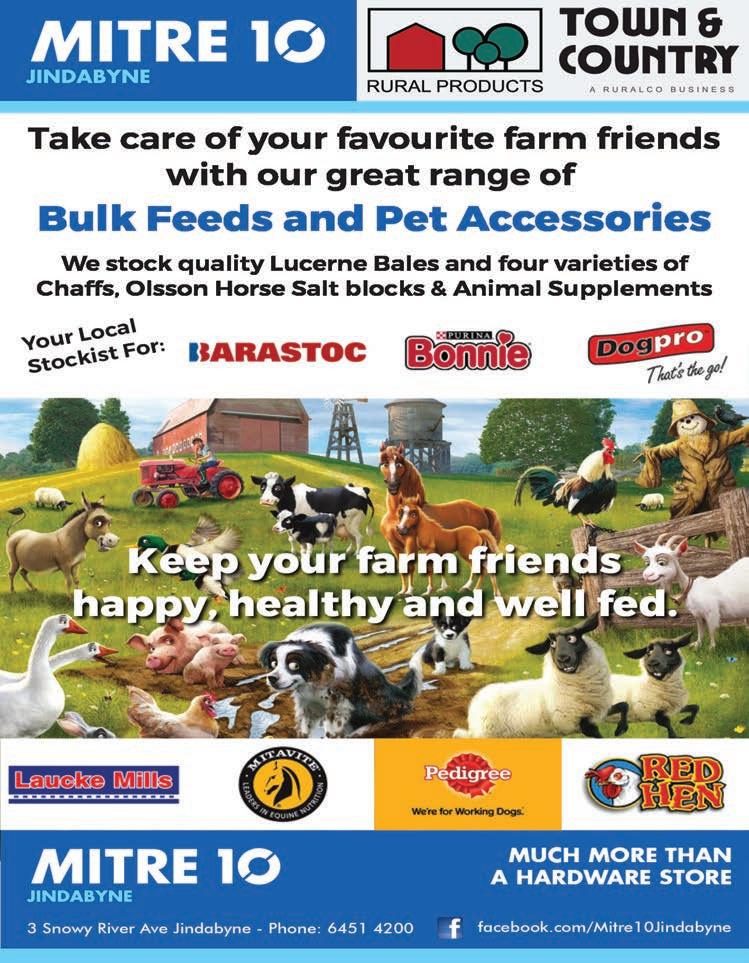
Reg Walls–Guyra
Ph: 0428 791 316 Email: reg@ccwool.com.au

Principals
Ray

– Adina Partnership
Phone Ray & Margaret 02 64543149
James & Jules 02 64543015/0411267818
Email jimmyb1@bordernet.com.au

Flock No 4156 (Adina Merino Stud Established 1986) 1437 (Adina Poll Merino Stud Established 2011)

Adina Merino Stud was registered in 1986 and breeding quality Merinos is both the business and the passion of local family Ray and Margaret, James and Jules Barron. Over the years the aim has been to maintain micron without sacrificing fleece weight or fertility.
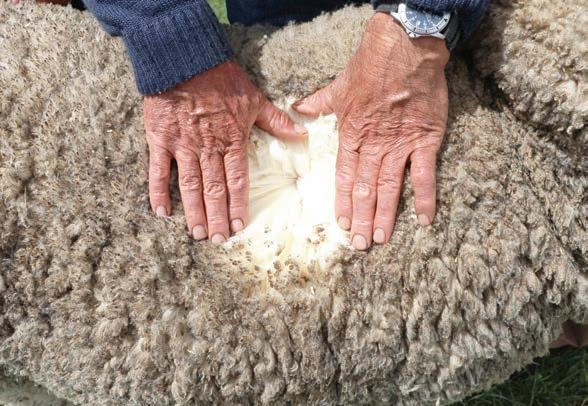

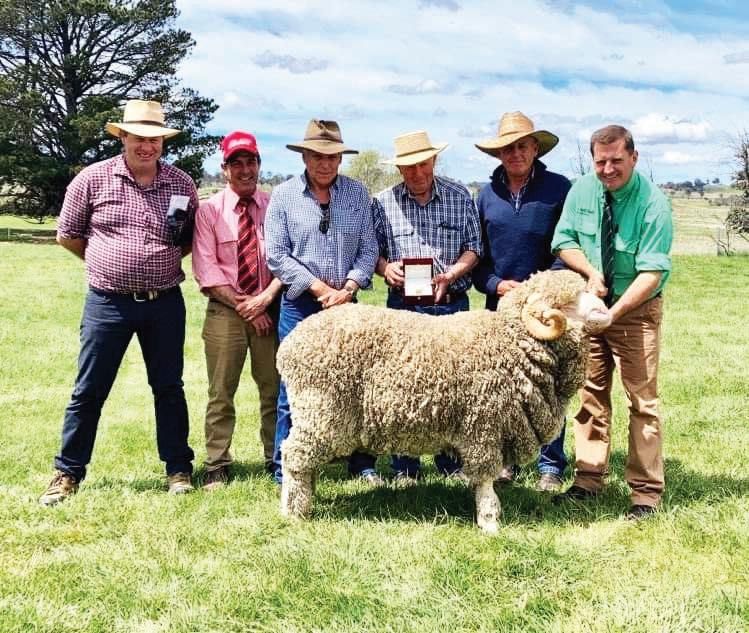
Adina sheep have become renowned for their heavy cutting and superior wool qualities, rams are run on the tough Monaro and possess hardy constitutions with fine-medium wool on large frames. Adina Poll Merino Stud was registered in 2011, the use of leading poll sires from around Australia has seen the Polls continue to improve.
Ray and James continue to see the benefits of selective mating, using sires from not only within the Stud but also sourcing sires from leading Studs to introduce new and desirable genetics to assist in achieving long term goals.
After two years of most “away from farm” Stud activities being casualties of Covid 19, it has been wonderful to be returning to a sense of normality in the Merino Industry. Adina enjoyed success at the 2022 Sydney Royal Easter Show in April, the Rabobank National Merino Show & Sale in August and exhibiting at the South West Slopes Merino Field Day.
As always, “Adina” are thankful to be the breeders of heavy cutting, bale filling Merinos - James is well known for saying “We still get paid by the kilo”! Wool volume remains King for this Monaro Stud and growers need to remain focussed on genetic gains for the future.
“Adina Merino Stud” will offer 46 Merino/Poll Merino Rams for sale by auction on Monday October 17. Rams will be penned for inspection from 9.30am with the sale commencing at 12 noon. Morning tea and lunch will be provided for your enjoyment.
James and Ray are extremely happy with the line up of rams Adina will offer at the Annual Ram Sale. The rams are well grown, even, structurally correct, well covered with stylish wool and plenty of it ! The Barrons are confident that these rams will certainly enhance the breeding aims of the purchasers.
The change of venue in 2016 has proven to be a great decision, the Annual Ram Sale is now truly an on property sale, held where Adina rams are born and bred at “Overdale” 2120 Peak View Rd, Peak View via Cooma.
The Barron family invite and welcome you to contact them for inspections prior to the day and they hope you will join them for their 22nd Annual Merino Ram Sale.
If you are a farmer, hunter or sporting shooter you need the right equipment for the job.








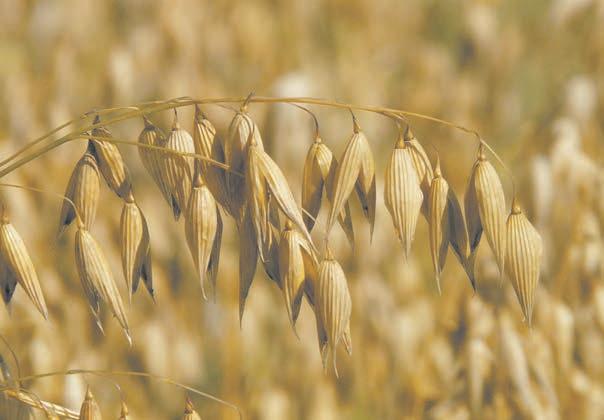







Monaro Arms stock a wide range of hunting and shooting gear, from firearms and ammunition, to optics, gun safes, hunting accessories and more.
Monaro Arms is a family owned and operated business in Canberra. Scott and his sons Chris, Jack and Tom bring more than 45-years of firearms and game hunting experience to the table, not to mention the experience gained from being lifelong farmers themselves. They can provide you with expert advice on what guns, optics and ammunition will suit your needs.
“It doesn’t matter how good a firearm or optic is. If it’s not fit for purpose, it won’t do the job for you.”


“I worked and lived on the land for most of my life and I’m also an avid deer hunter. For me, hunting and farming are more than a profession, they’re a way of life. I understand the needs
of farmers, hunters and shooters and I’ll do my best to help them get the best tools to suit their needs.” Scott said.
Monaro Arms is one of the few gun shops in the region and has proved hugely popular amongst shooters across the ACT and the Monaro. They stock high-quality products from renowned brands such as Tikka, Sako, Spika, Steiner, Winchester, Lithgow, Beretta, ADI and more.

“We are continually growing our range of products. If we don’t have it in store, we’ll do our best to get it in for you,” Scott said.
“Farmers are often busy and find it hard to get into town. We are more than happy to take orders or answer any questions you may have over the phone or via email.”
So whether you’re looking for a new rifle set up or just after some sound expert advice, drop into Monaro Arms at Molonglo Mall, Unit 6/105 Newcastle St Fyshwick, ACT or contact them on (02) 61939305 or email monaroarms@ gmail.com.
Foot-and-Mouth Disease (FMD) is a highly contagious animal disease that affects all cloven-hoofed animals including cattle, sheep, goats, camelids, deer and pigs.
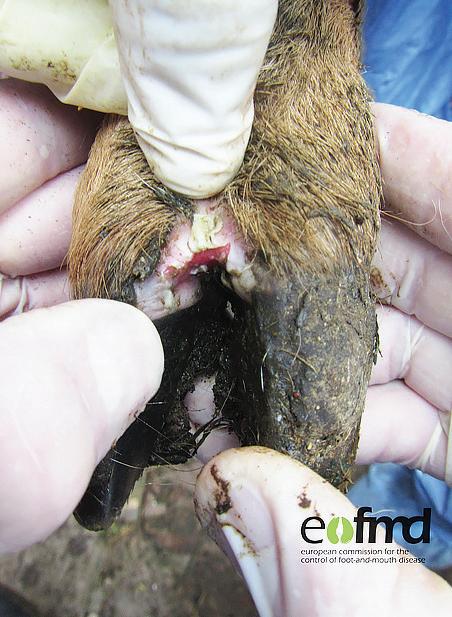

FMD can be spread through close contact between animals and can be carried on animal products, equipment, people’s clothing or by the wind. FMD outbreaks are common in Asia, the Middle East, South America and parts of Africa. In May 2022 an outbreak of Foot-and-Mouth disease was officially reported in cattle in Indonesia. The exotic Lumpy Skin Disease is also now present in Indonesia.
Local Land Services South East General manager, Luke Pope, said, “Our team of district vets and biosecurity officers continuously carry out animal disease surveillance and investigations across the state as part of the NSW Government biosecurity service.
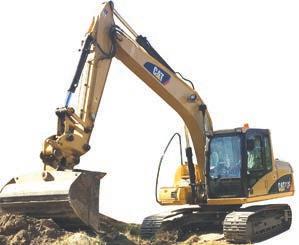

“We are working with saleyards, producer groups and landholders to increase awareness of FMD and other exotic diseases like Lumpy Skin Disease and provide advice on prevention and preparedness activities that are within people’s control.”
Local Land Services is encouraging landholders to focus on effective biosecurity measures on-farm.
“The best thing livestock managers can do right now is to refresh their biosecurity plan, learn the common symptoms of FMD and Lumpy Skin Disease and closely monitor their livestock.”
The key steps of a good biosecurity plan are:
1. K now the signs of key emergency management diseases - Make sure you and all those on your property can recognise foot-and-mouth disease and lumpy skin disease.


2. Reduce the threat by reducing the vectors - Make sure your farm biosecurity plan identifies these potential pathways and that you have adequate mitigation methods in place to protect your farm.
3. Farm hygiene and husbandry practicesCome clean-go clean! This is imperative for vehicles, footwear, equipment and machinery.
4. New/returning stock - Ensure that your farm biosecurity plan sets quarantine periods for new stock, and your own stock returning (ie from agricultural shows, agistment, etc).
5. Training and record keeping - Animal Health Australia (AHA) has several online emergency animal disease training courses available for all producers.
6. Plan for emergencies - Use the knowledge gained through the AHA emergency animal disease training, NSW DPI and Local Land Services websites. Prepare for an emergency animal disease event on your farm, in the region or in the country.
7. Help us to help you! - If you have cattle, sheep, goats, pigs, bison, buffalo, deer, camelids, equines (ie horses and donkeys) and poultry (100 or more), you need to register for a PIC. Also, please submit your annual land and stock return every year (even if you don’t have any animals) as this give us important information of what stock are where to better plan and respond as effectively as possible.
8. Local Land Services has gathered some of the best resources available into one website www.lls.nsw.gov.au/ead . It also includes contact details to help you find
9. your local District Veterinarian. Visit www. farmbiosecurity.com.au if you don’t have a farm biosecurity plan or need more information on how to upscale your current plan.

Landholders should immediately report any suspect cases to the Emergency Animal Disease Watch Hotline on 1800 675 888, or their Local Land Services District Veterinarian by calling 1300 795 299.
Further, Australia has long standing arrangements in place to manage emergency animal disease outbreaks. The ‘AUSVETPLAN Foot and Mouth Disease Response Strategy’ describes the nationally agreed approach to control and eradicate FMD if it ever occurs in Australia.
For more detail on how you can help keep FMD out of the country, visit www.lls.nsw.gov.au/FMD
 Alex Stephens, District Veterinarian South East Local Land Services
Alex Stephens, District Veterinarian South East Local Land Services
The ongoing wet weather has created perfect conditions for a difficult year for sheep producers. Sheep have had to deal with a multitude of challenges including degraded feed quality in standing dry feed, high moisture content in short green feed, minimal clover, cold wet conditions, increasing energy requirements from lactation and ideal conditions for worms to be picked up. Challenging worm and fly conditions are expected to continue in the coming months with weather forecasts predicting continued wet conditions this spring.
Worm risk has been amplified by wet conditions and suitable temperatures creating ideal environments for egg hatching and larval survival on pastures with most graziers finding it difficult to create clean pastures for lambing ewes and weaners. Black Scour Worm and Small Brown Stomach Worm have predominated the tablelands faecal egg counts. Significant deaths have been seen in ewes and lambs and weaners with averages approaching and exceeding 1000 epg and Barber’s Pole worms have continued to be present on many farms.
The key message is that this season is different and requires different management such as:
• Increased monitoring by faecal egg counts (FEC) (every 4 weeks) to understand what is happening in each mob,
• Increasing drenching frequency if indicated by FEC,
• Drenching of ewes may be required during lambing or at lamb marking,

• Increased importance of drench resistance testing,
• Increased importance of pasture management by spelling for longer, slashing, smart grazing or rotational grazing with alternate species.
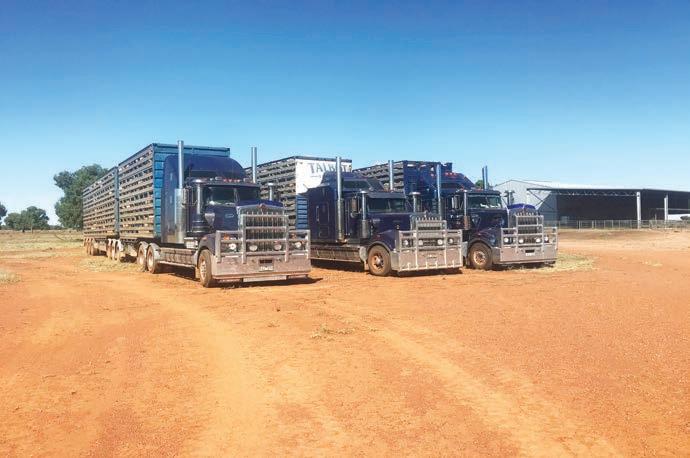
In some situations, where there is significant larval contamination of paddocks and no clean paddocks can be found, use of long acting anthelmintics (either injections or capsules) have been warranted. This has been required for worm control during lambing and in weaners. Long-acting products do bring some risks, particularly accelerated resistance development and poor control if there is already resistance to
that class of anthelmintic. The risk can be managed using priming doses of short acting effective drenches at the time of treatment with a long-acting, use of faecal egg count monitoring of the effectiveness of control, and the use of another effective drench at the end of the expected duration of the long acting (so called tail cutter treatments).
Spelling of paddocks is a recognised method of decreasing the numbers of larvae on pasture. This approach has been difficult this season given the favourable conditions for larval survival. Even in normal seasons it will take 4-5 months for larval number to decline during winter and spring (2-3 months in a “normal” summer). This year this period can be expected to be extended. An alternative is to alternate graze during this period with cattle or dry sheep (the latter given effective treatment onto the pasture).
Last autumn and early winter were a period when many farms saw significant losses associated with barber’s pole worm. This spring the risk will continue for these farms as worms survived as larvae on wet and cool pasture over winter. They may also have survived in sheep if an incompletely effective drench treatment was given. Now is the time to manage the emergence of barber’s pole for the coming season. As temperature rises in early spring, barber’s pole numbers begin to increase and build to create an issue for next summer or autumn. Action taken now will lessen that risk by strategically managing that early generation.
So, what can you do now? Conduct a worm test in critical groups of young and older sheep and ensure that a worm identification is requested. If Barbers pole worm is present, then either a drench or a vaccine approach can be used. Resistance issues and the ineffectiveness of drenches against Barber’s Pole worm is a major issue. Historically long-acting drenches such as closantel and moxidectin have been used, however developing resistance means these may not be so effective anymore. The increased drenching frequency required to control barbers pole worm results in heavy selection for drench resistance. Testing for drench resistance is important.


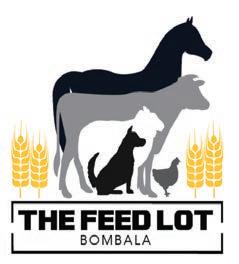
Vaccination with Barbervax may be
indicated on farms where a severe problem has occurred, particularly if seen over multiple years. The vaccination approach initially requires initial priming doses followed by maintenance boosters, but fewer are required in subsequent seasons. The vaccine contains barber’s pole worm proteins and works by stimulating the immune system. Diligence is therefore required to deliver
all the injections at the recommended times.
wormboss.com.au is a good resource for graziers seeking to better understand worm management and has a drench decision support tool to help graziers identify suitable drench options for their livestock. Worm testing kits are also available from your Local Land Services office.
Weed control in pasture and bushland, all seasons, all weeds.
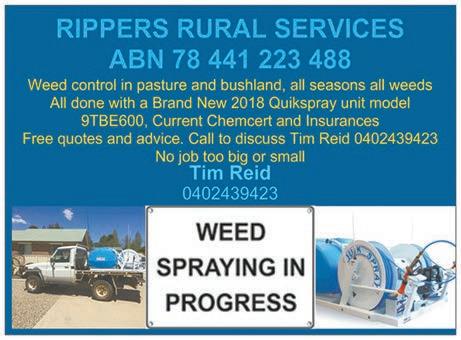
The Monaro adage too much rain is never enough has certainly been put to the test this year.
For John and Alison Starr at Winderby, just outside of Cooma, the last 12 months have been the wettest they have experienced on the Monaro.
John and Alison run their Winderby property off Maffra Road and a second property at Mt Fraser, Bobundra.
Since spring last year, they have watched the clouds continually roll, providing the Monaro with record breaking rainfall.
With the unprecedented amount of rain, John and Alison, like all Monaro graziers, have had a challenging year.
“From spring 2021 it’s the wettest we have seen,” John said.
“We have had more stock losses than in any drought. It’s been so unusual for the Monaro.
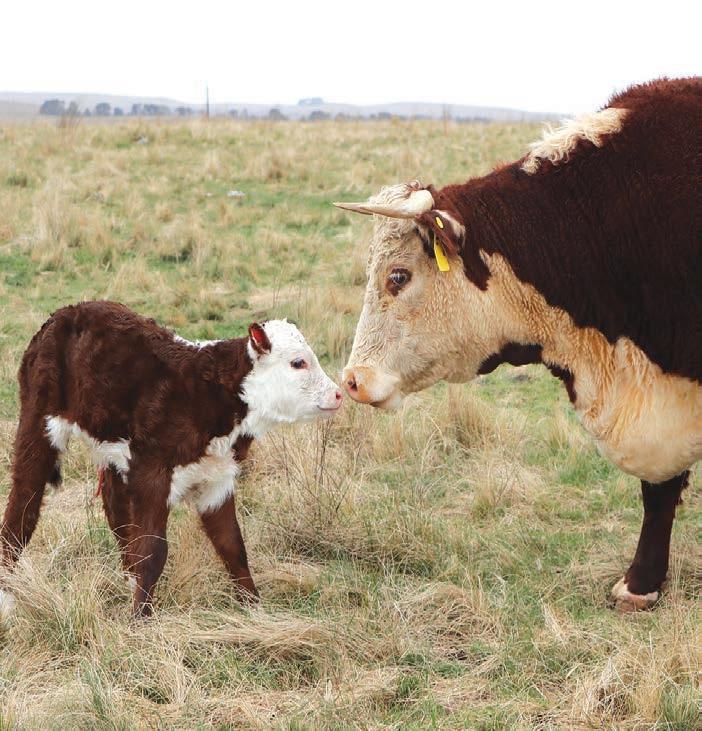
“It hasn’t been a lot of flooding rain but rather gentle, continuous rain. It hasn’t been a great year for sheep.”
The Bureau of Meteorology reports Cooma received 151mm in November 2021, 109mm in December 2021 and 149mm in January 2022.
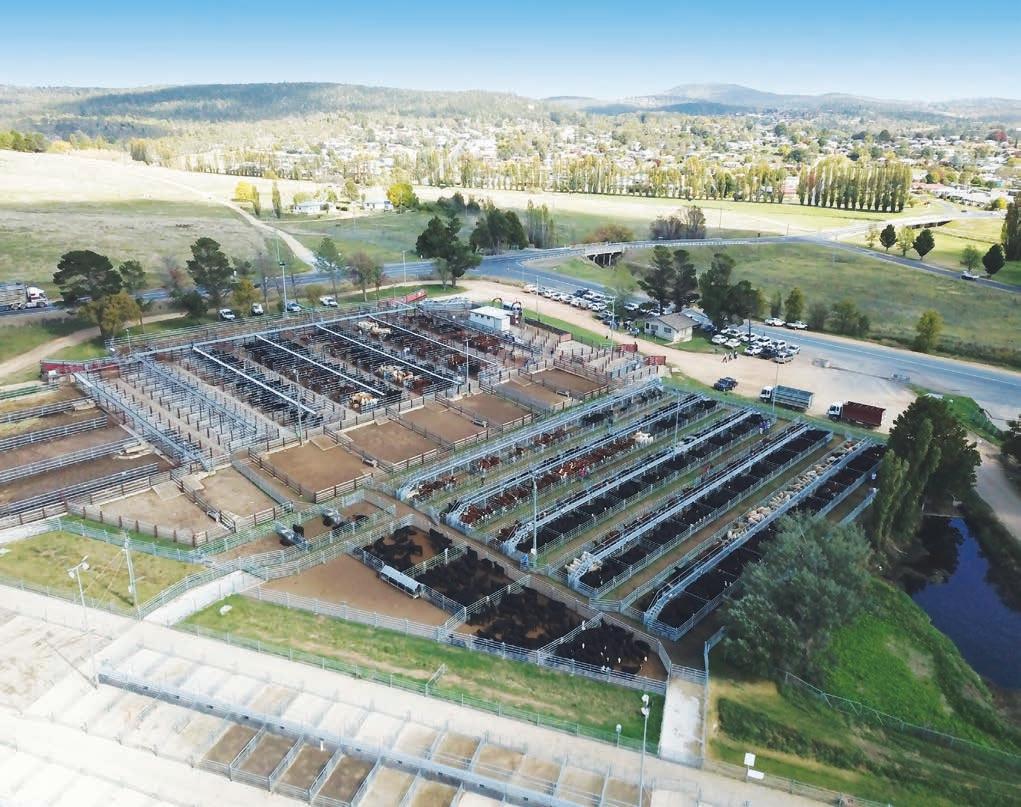
Alison said while the last 12 months have been testing, they are better prepared to manage the challenges of a wet summer.
“For the first time we had difficulty finding sheep in the paddocks. The grass was so long we could barely see them,” Alison said.
“Worms have been particularly bad in the sheep this year and they have been harder to drench.
‘We will use these experiences to improve our farming practices across the next few months.”
John and Alison’s Winderby property is 1110 acres and their Mt Fraser property is 1200 acres. The well-respected farming couple run 900 ewes and a small offering of cattle.
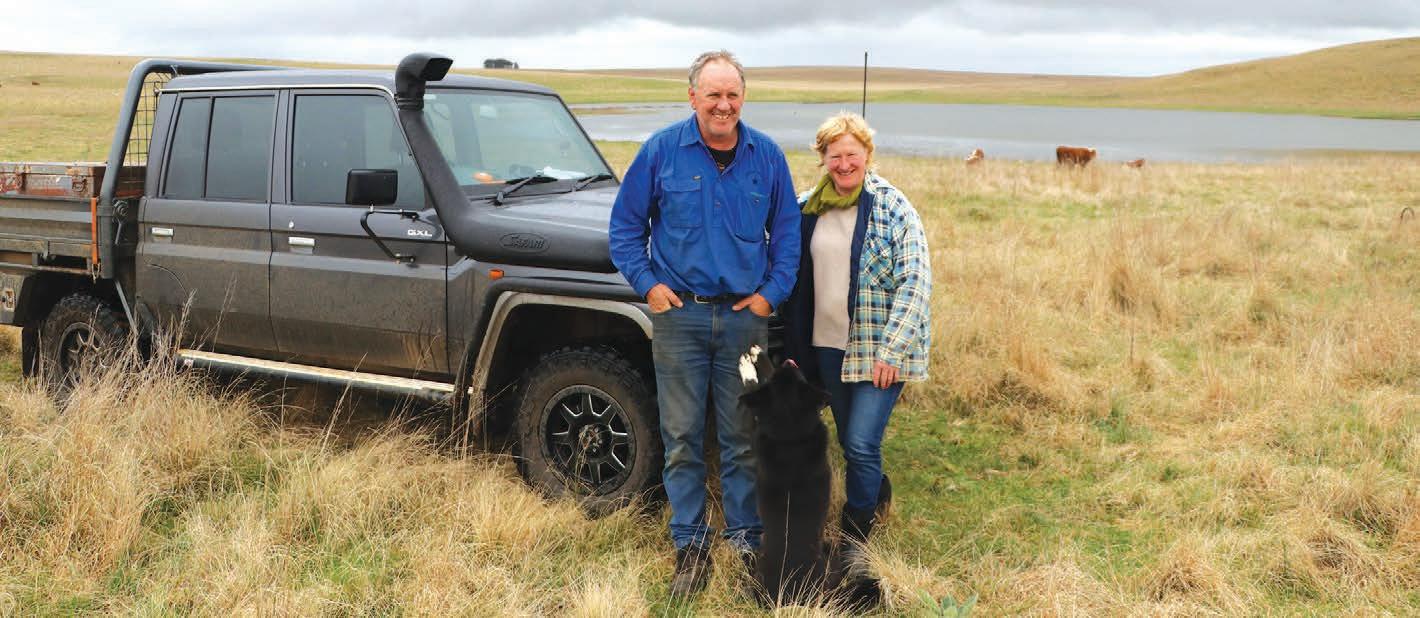
While the drenching rain has posed its problems, John said too much rain is better than the years of drought they have experienced.
“I would much rather wet than dry. We will learn from the last year,” John said.
“A positive for us has been not having to feed. There’s more money to be made in mud than dirt.”
Keith Lynch will be remembered as one of the Monaro’s most respected farming figures. Keith’s contribution to the local cattle industry, his family and the Monaro community was celebrated at his funeral on September 16.

Below is Keith’s eulogy as read by his children.
Keith Osbourne Lynch was born on November 9, 1924, at Dargans Flat -the second child to Gladys and Osbourne (Ossie) Lynch. Dad had an older sister Dorothy who died at four months-of-age from diphtheria so Keith was raised as an only child which was something that mum never let him forget as she waited on him hand and foot for the 68 years they were married.
Now you may hear me refer to dad as Keith throughout this eulogy , I’m not being disrespectful , it’s because dad always wanted to be called by his name. So everyone including grandkids and great grandkids all called him Keith / Keithy or Keithy Pie ... don’t ask me why ... it’s just the way it was .
So as I previously told you , Keith was raised as an only child which was pretty unusual in an era when large families were the norm. Dad used to tell us that because he had no brothers or sisters , his best friends were a travelling Chinese hawker - called Freddy Fong and a Yugoslav worker who lived on the farm burning charcoal for car gas converters during the depression called Jack Lovich. He used to tell the story of Freddy Fong spending Xmas at his house and Freddy giving him his first cricket set and playing cricket with him in their front yard. Jack the Yugoslav used to take dad fishing and always wanted to teach dad to swim but apparently his mum wouldn’t allow itconsequently Keith was a non-swimmer and would never go into water over his ankles.
I always thought some of these story were just yarns but unbelievably a post card turned up one Xmas in the ‘80s all the way from Yugoslavia signed by Jack - probably 50 or 60 years after he had lived on the farm, so I never doubted his stories after that but I think it must have been a pretty interesting and multicultural household.

Keith was a really intelligent and wellread man but he always used to laugh about his education - ’yep went to year 6 at Murroo and then did correspondence’ he would say with a grin on his face. The truth being he used to meet the mailman to pick up his correspondence lessons and promptly found the nearest hollow log that he could stuff them into, then told his mum ‘ they never showed up!’. All the while, the real reason for not doing
his lessons being dad’s love of horses. He said he just loved riding and breaking in horses, it was way more fun than school.
Dad was also excellent with a whip and would tell us about rounding up turkeys each night on his horse - all the while flicking the turkey’s bums with his whip to make them hurry up back to their pens where they were safe from foxes during the night .
Dargans Flat - where Keith was raised was not a big farm, so he had to find work off the farm. So at the age of 14, he became a shearer. He would tell us of his first shearing job at a shed owned by GW Mackay called ‘Hemsby’ (which is now under Lake Eucumbene ).
Apparently upon arriving at the shed the night before, he was given a sack and told to go to the bull stables and fill it with straw to make a mattress to sleep on. Anyway he was the last to get to the stable and consequently his mattress was so thin that the metal bed springs were imprinted on his back the next morning. He then had to start shearing at 6.30am and shear for an hour before breakfast was served, then another eight hours of shearing followed before the end of the day. He said he did that for a few weeks and was his introduction to a long career as a shearer and shearing contractor.
Dad was also a drover. There were many stories, from being stuck in snow storms in the mountains to being the last person to move a mob of sheep up Sharp St in Cooma. Apparently there had been a storm which had blocked the Massie St causeway and dad was forced to move the mob of around 1000 head over the bridge in the main street.
This all coincided with the commencement of the Snowy Scheme, so here he was trying to move stock at the same time the workers knocked of at Snowy HQ. Obviously there was chaos and a traffic jam and from that time on stock movements were banned up the main street of Cooma in 1949. Anyway it’s obvious by now you can see that dad had a strong ethic for hard work. Merren said he once told her ‘ if you are awake, you might as well be at work’. Dad had met mum on the main street of old Adaminaby when she ‘accidentally’ fell off her bike in front of him and he had to pick her up. Not long after that their first date was in the Shannons Flat hall and eventually Keith married Patricia Giddings on the November 19,1949, at St Mary’s Cathedral in Sydney, a marriage that lasted 68 years until mum’s passing in 2018 .
Dad built the family house on Dargans Flat. He said all he had in the bank was 50 quid so they had to build the house themselves . So he and mum dug the footings by hand, dug a sand quarries by hand so they could make the cement blocks by hand which of course were laid by hand by Keith.
This was the family home which has had a few additions since then but is still basically the same as when it was built in 1950. Soon after, Narelle was born followed by Merren, Lisa and myself (Dean). We all had a great upbringing out on the farm and here are a few childhood stories about Keith. Narelle tells the story that whenever she went with Keith to a particular paddock we called the cherry tree paddock there was a spot he always made her look because miraculously there would always be lollies planted there. No one ever saw how they got there but the ‘lolly plant’ was just there. Merren tells a snake story where she remembered coming across a snake in the paddock one day with dad. Merren is petrified of snakes but Keithy (as Merren called him) calmly threw his hat in front of the snake, telling Merren not to worry because the snake now won’t bite because it’s too busy watching his hat. Meanwhile he went and found a stick to ‘relocate’ the snake. Merren swears this trick worked but please don’t try this trick at home.
Lisa tells a sex education story. She was with dad checking stock one day and asked how the bulls and rams knew when it was time to ‘get together’. Dad’s reply was ‘well they make an appointment’. Lisa then asked ‘well, what’s that bag between their legs?’‘ Dad replied – ‘that’s where they keep their change of clothes’ he swiftly said. Needless to say when Lisa told mum all this later that day she was told never to ask her father again about such matters.
There are plenty of stories like these as the years rolled on. One thing I should mention is that Keith was never concerned about his age, saying it’s just a number. So I truthfully can say that up to a couple of years ago he would work beside Mitch and I and we treated him no differently to each other.
An example of this is the image of him shearing a sheep, which was only a couple of years ago where he was about 94 and there is another image of him on a horse with a group of people. In that photo he was 88 and was on a six day trek from Yaouk to Corryong with Peter Cochran. The horse he rode was a stock horse he had not long broken in and was pretty frisky as well. So basically you can see that age was never a barrier. I’ll just go through a few of dad’s loves and hates. Loved his family. Particularly the visits from his grandkids and great grandkids. I’d ask how the visits went and he’d say ‘there’s stuff everywhere’ with a grin on his face Loved his terrier Genie. She went everywhere with him. Loved hard work. Loved buying and selling real estate ...he worked as a real estate agent for many years and was able to increase the farm size over the years. Something he was always proud of. Loved wool and
his Merinos especially his Wongas. His annual trips to Dubbo ram sales with his best mate Ross Gilbert were legendary.
Hated nylon - I remember working in the sheep yards on the farm and dad going crook about the nylon undies that he was wearing and mum insisted buying him He used to grab his knife or hand shears, pull up and cut each side. He would then rip them off like a stripper and hurl them over his shoulder. They were usually red and remnants can still be found around the yards.
Loved cattle and established the Kunuma Angus stud 39 years ago which is still going strong with three generations now living on the farm. Hated rabbits. Alive or dead Loved his violin and old time dance music. There are a couple of photos in the booklet af dad playing and a special thanks must go to Nick, Mike and Andrew for playing here today. Dad always enjoyed the friendship nights at Adaminaby, Shannons Flat and the Christmas party functions at Jindabyne playing with Nick, Mike and the band.
He particularly loved having his grandson Nathan in the band so he could appreciate and learn ‘real dance music’ with a proper beat. Another music story was a few years back he went to play at the ‘oldies Christmas party’ and when it came time to cut the cake it was to be cut by the oldest person in the room ... ‘flaming heck turned out it was me ‘he said laughing ‘and I was the entertainment‘.
Loved horses. He always had a good horse hanging around the farm. He used to say ‘you need something decent between your legs!’ Whatever that was meant to mean. Hated pasta nearly as much as rabbits Loved a quiet whiskey after a hard day’s work. Luckily I was able to sneak one into the hospital when he was crook a few weeks ago, sorry Dr Tugwell and that image on the front page may have a few whiskeys behind it because that photo was taken in our bull shed at dad’s 90th birthday and I know a few were had that night. And lastly, he loved this church and the regular visits from you Father Mick. When mum passed and you kept up your regular visits, it was a real comfort to him .
I know we are all sad about dad’s passing but if you had to write a script about how you would live on this his earth - and it was - live a happy and healthy life till you are 97, just longer than the Queen, and pass away in your sleep ....I think it’s something we would all wish for.
History was made at the ninth annual Tattykeel Australian White Sale on September 28, with a ram reaching $240,000 at Branxton Park, Black Springs.
The ram, Tattykeel ‘Platinum’ ET210184, smashed last year’s record of $165,000 set by Tattykeel White Gold.
He was one of 30 elite stud rams sold for a $42,667 average.

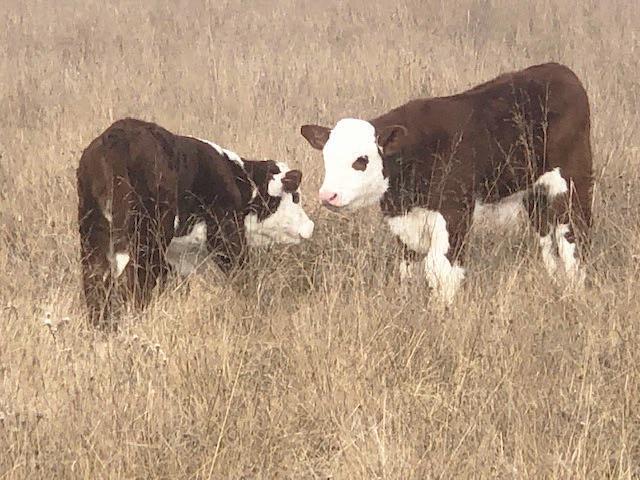

The ram attracted strong competition both in the selling shed and online. He was bought by the Elite Syndicate which includes Sans-Souci stud, Molong, Bungarley stud, Tarcutta, Regal stud, Inverell and Doonkami stud, Yetman.


Sired by Tattykeel 200085 and out of Tattykeel 171377, the April-drop recordbreaking ram weighed 122 kilograms and was backed by a dominate show ring performance including being sashed grand champion Australian White ram and interbreed champion shedding breed ram at the 2022 NSW State Sheep Show, Dubbo.
Tattykeel retained 250 straws for in-flock use, while the stud also retained the right to collect another 250.
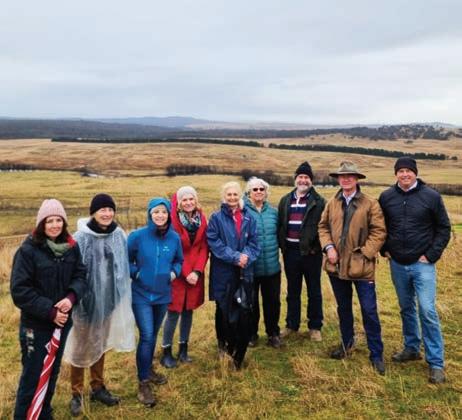
National Landcare Network staff and directors felt the warm hospitality of partners Mulloon Institute on a cold winter day visiting the Mulloon Rehydration Initiative.
The initiative has been designed as a model to be scaled up and rolled out across the country and the Landcare movement are excited to partner with this vision.
It was a pleasure to see firsthand the impact of the catchment-scale rehydration project and to be inspired by the passion of Mulloon directors and key staff members.
Pictured below, from left: Tam Connor, Education Coordinator; Maxine Cooper, NLN Director; Jess Dickson, NLN EO; Kathy Kell, Mulloon Institute COO; Carolyn Hall, Mulloon Institute CEO and MD; Kerry Olssen, NLN Policy Officer; Jim Adams, NLN CEO; Gary Nairn, Mulloon Institute Chair; and Peter Hazell, Principal Landscape Planner.
Late last year, the National Landcare Network signed a Memorandum of Understanding, with leading agricultural research, education and advocacy organisation, the Mulloon Institute to deliver Catchment Scale Restoration and Rehydration Pilots across the country.
The National Landcare Network and the Mulloon Institute will work together to identify potential catchment partners in conjunction with the relevant State and Territory Landcare Organisations.
The collaboration will identify local and regional Landcare capacity for pilot catchment projects and engage the relevant grassroots Landcare communities in the establishment of large-scale catchment models in each state of Australia with multiple landholders.

The partnership announcement was enthusiastically received by Landcare members from across the State and Territory organisations.
As Carolyn Hall, Mulloon Institute CEO and MD, says so eloquently:
“Landscape rehydration at the catchment scale is a social process. It brings communities together. It empowers them into a action to create change that makes their environment, makes their futures safer, and more resilient to climate change,
The Mulloon Institute works with communities around Australia to restore and rehydrate catchments at the landscape scale. By better managing surface and groundwater, by rebuilding floodplains and by rebuilding catchments, the Institute’s work is bringing back the processes that once operated in the Australian landscape.
For more information: www.themullooninstitute.org
Dean Incher of Dry Plains recently won the Murray Valley Yard Dog Championships at the Henty Machinery Field Days.
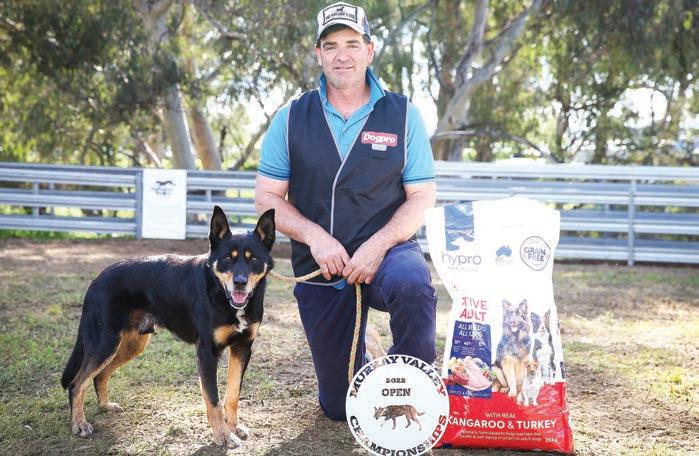
With 185 points, Dean and his dog Rafa took out the top spot with fellow Monaro man, Michael Hedger of Rocky Plain placing third.
Dean has been competing in yard dog trials since 1996.
“I remember the Haylocks held a trial at Springfield and I thought I would have a go,” Dean said.
“I think I won the encouragement award. While I enjoyed it, I remember thinking I was way off the pace of the others back then. Now I travel around NSW to compete, and have competed in the state championships. I also occasionally judge trials as well.”
Dean, who mostly breeds his dogs himself, says he enjoys the challenge of the trials.
“It’s about controlling yourself, the dog and the sheep, so it is quite a challenge. There are plenty of good dogs and handlers around, so to come up against them adds to that challenge and that’s what I enjoy.
“I have also made some really great friends through trialling, so that has probably been the best part about it. Not only do you get to know the other handlers, but their partners and families too.”
Dean says it often comes down to having the right dog on the right day.
“Not all dogs are suited to trialling,” said Dean.
“There definitely needs to be a natural ability there. Some are just better than others.
“In terms of training, I spend time breaking the dogs in and then they just take part in the general day-to-day farm work on our family sheep and cattle property.”
Dean’s latest win was with Rafa, a seven year old black and tan kelpie.
“He’s a good dog with a lot of ability. He can be full on, but is also quite controllable.
“Rafa also won Hay and the Monaro Championships at Dalgety earlier .”

Wednesday 19th October 2022, Inspections 9.30am - Sale 11.00am Offering - 36 Rams
Sunday 16th October 2022 11.00am to 4.00pm BBQ and Refreshments on Open Day and Sale Day
The NSW Government has launched two new groundbreaking projects to encourage landholders and farmers to invest in sustainable timber production as part of their land management practices.
The Forest Stewardship Program and Farm Forestry Certification Pilot are the first of their kind in Australia and mark a new era in sustainably managed forestry on private land in NSW.

The two programs will increase the amount of environmentally sustainable wood available on the market to help deal with the current timber supply crisis.
Minister for Agriculture Dugald Saunders said the Farm Forestry Certification program will mean landholders can have their forest management independently endorsed to support sale of their certified timber through more wholesalers.
“Sustainably supplied timber products are in high demand, so the ability for farmers to demonstrate their environmental credentials through third party certification is a big win for consumers and industry,” Mr Saunders said.
“This certification will increase consumer confidence, broaden market access and improve the price our state’s primary producers can demand for their timber.”
Mr Saunders added that the NSW Government is continuing a strong environmental focus on the farm forestry sector by also announcing a pilot Forest Stewardship program.
“We know that one of the biggest barriers associated with farm forestry for landholders is its complex regulatory environment,” Mr Saunders said.
“The Stewardship program will pair landholders with expert advice and financial incentives of up to $60,000 to help
overcome these challenges and improve on-ground outcomes and sustainability.
“This program recognises that primary producers in NSW are some of our greatest environmental stewards, and by supporting them to improve the management of their forests, we can help ensure the benefits farm forestry provides will continue for generations to come.”

These programs form part of the NSW Government’s $28 million investment in the 2022-23 NSW Budget to bolster onthe-ground support for producers, drive innovation and promote best practice in sustainable farm forestry businesses.
The NSW Government also recently introduced new Farm Forestry Codes of Practice that will ensure long-term sustainability for the industry and provide robust environmental protections across the NSW private forestry estate.
New changes for landowners under the codes include:
• New harvest and operating standards that provide greater clarity and are easier for landholders to apply –including pest, weed and fire management;

• Updated planning and reporting with a clear role for Local Land Services to engage with farmers, and options for small scale harvesting; and
• Environmental protections that are clearer for landholders while ensuring long-term environmental sustainability in farm forests.
For more information about the Farm Forestry Certification and Farm Forestry Stewardship programs, visit https://www.lls. nsw.gov.au/help-and-advice/private-nativeforestry/ecologically-sustainable-forestmanagement

Gudair Vaccinated
Lawrence & Melissa Clifford “Bindaree” 1001 Stoney Creek Road Rocky Plain NSW 2628 Mobile No 0423 902 561
Lawrence_liss@outlook.com Flock No 5098 Est. 2015 OB 15/28




To find out more, contact your local Rural Bank representative, visit ruralbank.com.au or drop into your nearest Bendigo Bank branch.
John Scarlett
Senior Agribusiness Relationship Manager 0419 692 007
11 068 049

Avonside Merino Stud will be holding their 13th annual on property ram sale on Thursday October 20 at 11am.
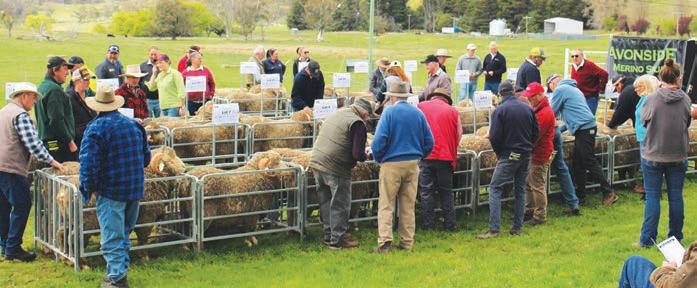

This sale will be held at “Muniong” with inspections from 9.30am. Forty, oneyear-old rams will be offered at auction followed by private treaty rams.
This sale will also be interfaced with AuctionsPlus, so keep an eye out for photos and videos of every ram in the weeks leading up to the sale. Selling agents are Elders and Monaro Livestock and Property. An Open Day will be held on Sunday October 16 between 10am and 3pm.
The rams on offer have come through extremely wet and challenging conditions, having had 1166mm on them since birth in September 2021. All local producers understand the challenges that this creates on young growing sheep. Despite this we are extremely proud of how our wools have withstood the elements and our team will exhibit the same white, bright wools from the productive skins that you have come to expect from
Avonside genetics. Feedback from our clients has highlighted the resilience and functionality of the Avonside type through a range of environments and climatic conditions.
The fantastic loyal support from our clients continues to drive our passion to breed and offer functional and profitable merinos. It gives us the confidence to invest in industry leading genetics, both through AI and the purchase of new sires. We were excited to be able to purchase the $20,000 top price ram at Cottage Park last year and are confident that his tremendous bone, barrel, and carcase measurements combined with a great skin and wool, will continue to drive our flock forward and further enhance the profitability of our genetics. We are only ever a phone call away for anyone wanting assistance classing sheep or ram selection advice.
Avonside Merino Stud invites clients and interested sheep breeders to our 2022 Open Day and Sale. Enquires welcome anytime.
Farmers and community members across the State are being called on to provide their valuable feedback on the NSW Government’s new draft Regional Strategic Weed Management Plans.
The 11 plans, covering different areas across NSW, help to explain how each region will work together to identify, minimise, respond to and manage high-risk weeds over the next five years.


Minister for Agriculture Dugald Saunders said the plans have been updated using expert local knowledge, research and technology to ensure they meet community needs.
“Weeds are an enormous problem for everyone in NSW, with farmers bearing the brunt of the impacts and costs of them invading crops and harming livestock,” Mr Saunders said. “These plans are used to identify the priority weeds to be targeted in each region, while also helping shape the management and control of those weeds.



“When it comes to weeds, and biosecurity in general, everyone has
an important role to play to safeguard NSW, which is why it’s critical we receive community feedback on these draft plans.
“We want to ensure these plans are addressing the issues landholders and community members are tackling in their paddocks and on their land, so the importance of public feedback cannot be understated.”

To view, read and submit feedback on the regional strategic weed management plans visit www.haveyoursay.nsw.gov.au/ weed-plans.
Submissions close on Sunday, 6 November.
Regional weed committees, comprising local councils, regional weed management authorities, public and private landholders, and community members, have developed the draft plans in consultation with Local Land Services and NSW Department of Primary Industries.
For more information on how to identify and control weeds, visit www.weeds.dpi.nsw.gov.au/
AWI’s marketing arm The Woolmark Company last month launched a campaign reminding Aussies that the world’s best Merino wool is produced in Australia – and urged them to support their wool industry and shop for Australian wool products.
The new campaign aims to instil a strong sense of pride amongst all Australians living in both regional and metropolitan areas, and highlights Australian wool as one of our cleanest, greenest exports.
The campaign also reminds the tens of thousands of Australian woolgrowers that their passion and livelihood is an integral part of Australia’s economy. Despite droughts, fires, floods and a global health pandemic, woolgrowers’ ingenuity and resilience ensure they continue to produce an export that is in demand by brands looking for a premium natural fibre.
“Wool used to dominate the performance sector in the 1950s, but was replaced by cheaper, synthetic alternatives in the 60s,” said AWI CEO John Roberts. “Yet no other fibre – natural or man-made – can mimic all of Merino wool’s innate performance abilities including breathability, thermoregulation and moisture wicking properties.
“We want to remind Australians to go out and support their industry by choosing Australian Merino wool products. The Australian woolgrower is the unsung hero of the sustainable fashion and sports movement, and we are seeing an increase in demand for Australian Merino wool as brands transition towards more sustainable and circular products.”
The marketing campaign, titled What does it take?, was launched on 22 August and will run through to the end of September.
The campaign includes:
• 3 0-second hero video (see section below) that is being rolled out to rural and metropolitan audiences via a digital and free to air TV campaign on the Channel 10 and 9 rural networks, as well as social media.
• Social media campaign on Instagram and Facebook, comprising a series of shorter video clips with fast facts about wool.
• Radio campaign promoting wool to sports fans on the Sports Entertainment Network.
• Electronic direct mail campaign to consumer and woolgrower audiences.

• C ampaign webpage on the popular Woolmark. com website.
A key part of the campaign is to drive audiences to the Shop on Woolmark.com, thereby directly increasing sales of wool product. Head to www. woolmark.com/the-wool-edit for details.
Some of the home-grown brands featured in the campaign include IO Merino, Merino Country, Sportscraft and Pure Baby. Products from these and more Australian-owned Merino wool brands are available to buy via Woolmark.com.
Screenshots from the campaign webpage promoting benefits of wool and pointing consumers to wool products to buy.
The 30-second hero video of the campaign focuses on the (1) natural performance, (2) protection, and (3) nurturing benefits of Australian wool, with woolgrowers being the important thread throughout the story.
1.“What does it take to climb to new heights?”
The film opens with a dramatic shot of the iconic Blue Mountains. It zooms in to a lone rock climber scaling the face of a cliff. Immediately, we connect with wool’s most well-known benefits: warmth, breathability and technical performance. Close to the summit we see a hand help our rock climber to the top, revealing an Australian woolgrower pulling her to firm ground.
2. “What does it take to face into danger?”
The films cuts to a scene filled with flames. A close-up reveals a Merino wool base-layer as a volunteer firefighter pulls his jacket on over his shoulders. Science shows that wool base-layer garments are a proven defence for military and first-responder personnel. Here, our fire-fighter and woolgrower hold ground, grasping the huge hose blasting water across frame.
3. “What does it take to comfort what’s most precious?”
Next, the film shines the spotlight on the cosy, soft, nurturing feeling of wool. A mother wearing a warm Merino wool cardigan picks up her baby from a cot and wraps her in a soft, breathable blanket handed to her by the woolgrower.
4. “It takes an Aussie woolgrower to make the best wool in the world.”

The final scene journeys back to where it all begins: the farm. A close-up shot of some Australian woolgrowers, the producers of the world’s best wool – nature’s original eco fibre.
John Roberts says it is important for the campaign to highlight Australian woolgrowers as well as the wool fibre and the products that are made from it.
“We want to shine the light not only on the world’s best fibre, but the tens of thousands of men and women who grow it. Many remote, rural and regional communities continue to be supported by Australian wool-growing, with more than 60,000 Australian woolgrowers and many tens of thousands more working in the industry. These are the people who grow your clothes, who grow the best wool in the world,” John said.
The film was shot at ‘Cooradigbee’ in Wee Jasper, NSW, a Merino wool-growing property owned by Helen and Ian Cathles.
Another component of the social media campaign is to drive audiences to The Woolmark Company’s ‘Grower Spotlight Series’ that includes profiles of numerous woolgrowers from across Australia. Head to www.woolmark.com/fibre/woolgrowers for details.
More information: View the campaign film at www. woolmark.com/australian-wool
As part of his 2021 Nuffield Scholarship studies, Monaro grazier Andrew Rolfe has spent two months overseas researching best management practice techniques used in farming systems across the United Kingdom, Northern American, and the Netherlands.
Andrew’s trip to the UK unearthed new techniques and ways of farming that Andrew believes can be successful on the Monaro.
Embracing the use of anaerobic digestive plants for energy production is one method Andrew thinks Australian graziers can adopt from their UK counterparts.

“One thing I found really interesting was the use of anaerobic digestive plants. There is a real potential for that in Australia,” Andrew said.
“You can take a whole crop or silage
essentially and when the cow digests that and produces methane, it is a biogas that can be injected right back into the line.
‘If it’s hard to make good hay, you can make silage, put woodchips in for the cow to digest, and you will get 80 percent nutrients put back and can capture the carbon off that.”
Andrew and his wife Zoe run the family owned farming business Kenilworth Grazing at Maffra, a self-replacing Merino flock enterprise comprising 5,600 ewes across 4,100 hectares.
Andrew is hoping his Nuffield Scholarship will allow him to identify and combine global best management practices to develop an intensive management system that will enhance production and drought preparedness for Australia’s Merino sheep industry.
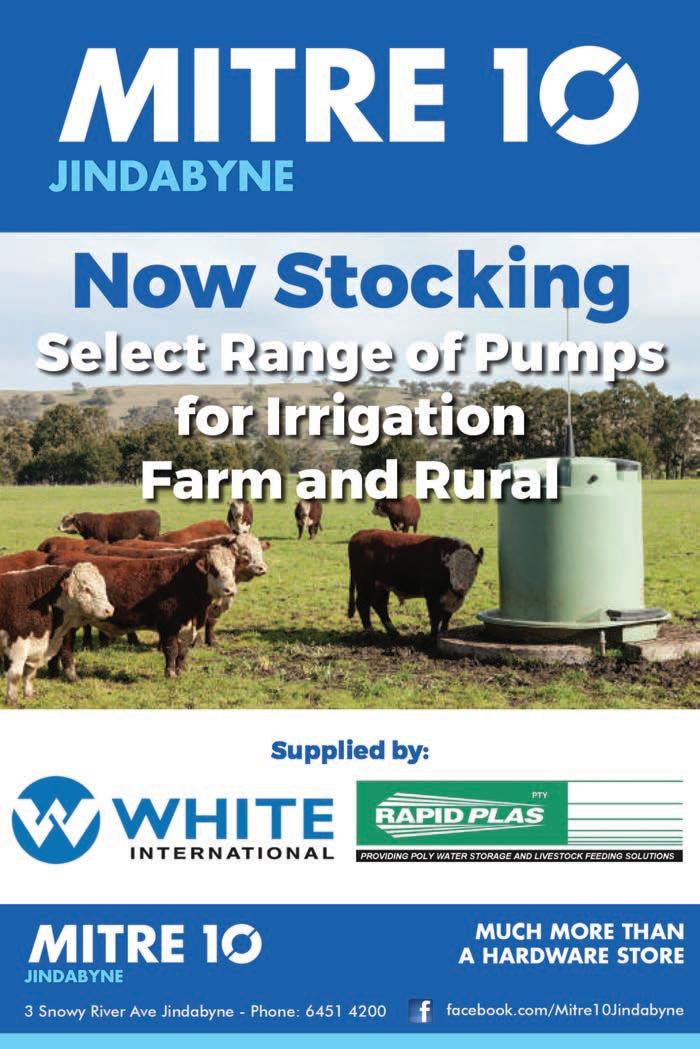



“I want to research the efficacy of such a system and also explore other avenues to increasing productivity and preparing for drought,” Andrew said.
‘Intensifying production systems during media seasons through confinement feeding, increasing forage crop production and closer stock management for example, offers potential for producers to retain fodder and trade stock opportunely.
During Andrew’s 28 days in England, he met with some of Europe’s highest ranking agricultural advisors. He had the opportunity to discuss farming practices with George Eustice, the Secretary of State for Environment, Food and Rural Affairs of the United Kingdom.
The travel component of the Nuffield Scholarship saw the 135 scholars come together for a conference in Norwich where discussion focussed on climate change, carbon emissions, and Ukrainian conflict.
“We spoke online with a number of Ukrainian farmers, it was confronting to see what is happening to their land.”
“The scholars conference had a diverse mix of people from many different industries. Everyone was very passionate.”
Through visiting a range of England farming systems, in particular sheep producers, Andrew was able to take note of the differences between Monaro and UK farming practices.

“Agricultural tourism is really big in the UK. I think we can work towards reducing the gap between farmers and the consumer,” Andrew said
“We could look at more farm open days. We should be proud of what we are doing as custodians of the land.”
In June, Andrew completed his second round of overseas travel for the global focus program. He visited farms in Singapore, the Netherlands, Canada and the United States. It was his trip to the Netherlands that Andrew found the most insightful.
“The Netherlands are amazing farmers. Their agricultural output is $180 billion Euro each year.
They have excellent soil and a really innovative.”
Heavier than normal winter rains across many of Australia’s sheep regions herald a potentially bad flystrike season.
Early prevention of flystrike is key to minimising animal welfare and economic threats, so now is the time to implement your annual flystrike management plan.
The resources from AWI’s Flystrike Extension Program can help you.
There are currently three components under AWI’s Flystrike Extension Program available to woolgrowers to support their flystrike management: (1) It’s Fly Time!™ resources, (2) DemystiFly™ resources and (3) SimpliFly™ workshops, while others are in development.
Woolgrowers across the country can pick and choose how to get involved with the different components of the program that best suits their requirements, sheep type, climate, operating environment and husbandry practices.
The popular It’s Fly Time™ resources provide practical and tactical information for woolgrowers on integrated flystrike management in the lead up to, and during, high-risk flystrike periods.
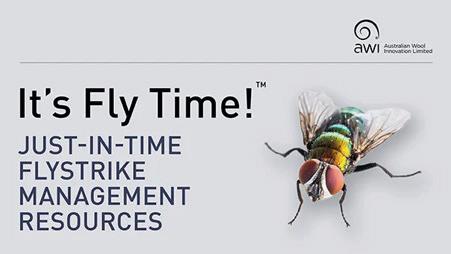
They include tips for preventing flystrike, information on prioritising sheep for monitoring and treatment, and options for treating sheep when flystrike does occur. The resources include:
• It’s Fly Time! webinar (1 hour) recorded in August 2022.
• Factsheets on ‘Recognising and monitoring flystrike’ (4-pages) and ‘Preventing and treating flystrike’ (4-pages).
Sheep producers have always used an integrated approach to managing flystrike risk in their flocks. For most, this has involved mulesing, crutching, shearing and jetting at times during the year that minimise risk.
Market pressures are now challenging the use of mulesing as a practice to reduce the risk of breech strike. Responding to customer demands for non-mulesed wool, requires sheep producers to re-assess both their breeding program and annual management calendar - so that flystrike risk can be minimised in non-mulesed sheep. Over time the breeding of plainer, less susceptibile sheep may reduce the reliance on annual management actions and chemicals for flystrike treatment and prevention.
FlyBoss provides producers with some specific tools for assessing flystrike risk and the impact of management actions on that risk. The tools are specifically developed to make use of local climate and weather data to

• O ptimise shearing, crutching and chemical treatment times to minimise risk;
• C ompare two management systems and their flystrike risk profiles;
• Check registered chemicals for fly and lice control.
The Management section of FlyBoss provides information on
• Developing an annual flystrike management plan
• Using the National Wool Declaration
• Choosing shearing and crutching times to reduce flystrike risk
• Jetting and spray-on treatments to reduce flystrike risk
• Worm and dag management to reduce risk
• T he optimal tail length
• O ptions for breech modification
When monitoring for flystrike, the aim is to detect strike as early as possible, and certainly before the toxins produced by the maggots affect the entire sheep (systemic effects).
Small strikes that cannot be detected easily on general inspection, called ‘covert’ strikes, are quite common and can persist for some weeks before either advancing to an ‘overt’ strike— one that can be detected by a closepaddock inspection—or resolving without the need for treatment.
These covert or hidden strikes are an important ongoing source of maggots that build up the fly numbers through a season.
Aim to detect strikes before systemic signs appear
Early detectable strikes:
• Signs of strike become noticeable on a close paddock-inspection of a mob.
• T he strike wound is not particularly large.
• T he sheep will typically be biting or scratching at the affected area— especially with breech strike, but less so with body strike—and may stamp its feet and duck its head, but will be staying with the mob.
• Maggots have commenced feeding on the skin of the sheep and the affected area will appear different—the wool may appear lighter coloured from the chewing or rubbing, but will progressively become darker with more exudate.
• A limited amount of toxins from this feeding will have entered the sheep’s system.
• T he sheep will be suffering local discomfort and be irritated, but there will be no obvious systemic effects (as described in advanced strike, below).
• A cost will occur from the loss of fleece removed from the strike site and the chemical treatment costs, but a larger cost is associated with the time to detect and treat these sheep. There may also be some depression of wool and body growth.
Advanced strikes:
• O nce signs of systemic illness commence, they typically progress over a few days.
• Sheep can’t keep up with the mob while grazing, will be left behind, and are often found on their own. They will become increasingly depressed and will stop eating and drinking and will lay down and be reluctant to rise. Without treatment, they generally will die in a few days.
• T he strike wound will generally be large, wet and dark, and the maggots will be migrating out to consume healthy tissue.
• Strike from secondary blowflies (flies other than Lucilia cuprina, such as Chrysomya and Calliphora spp.) can be smaller, but more serious, as the maggots ‘underrun’ the skin and cause extensive damage and illness.
• Maggots will be large and feeding extensively on the skin, which will be swollen and inflamed.
• Significant amounts of toxins released by the maggots will have entered the sheep’s system and be affecting the entire sheep (systemic effects).
• T he sheep will be suffering from local pain, as well as a fever and other systemic (whole body) effects.
• A significant cost will occur at this stage. Either the sheep dies or is destroyed, or if it is treated, there is the loss of fleece removed from a large strike site, as well as the remaining fleece becoming tender, the chemical treatment costs, and significant labour. On top of that is a loss in weight from the systemic illness.
If sheep with advanced flystrike are found, increase your frequency of monitoring.
Goulburn is set to host a biological soil health day aimed at unlocking key information to support farmers wanting to increase profitability and improve farm health.

Sponsored by family owned and operated businesses NutriSoil in conjunction with Best Farming Systems, the Biological Farming Roundtable (BFR) will bring experts in soil health to Parkesbourne in late October.
NutriSoil director Nakala Maddock is excited to be hosting the BFR with Craig Hunt, who is a committee member of Landcare Mulwaree Grazing and Farming Group. The Landcare group is associated with Community
Voice 4 Hume, which is supporting and extending soil improvement projects, including trials established by Craig and his family earlier this year.
“We love providing networking opportunities to farmers who want to increase their knowledge on how to use biology to improve soil health and therefore plant, animal, human and landscape health,” she said.
NutriSoil has teamed up with Best Farming Systems to bring agroecologist David Hardwick from Soil Land Food, and Walter Jehne an internationally recognised soil microbiologist, innovation strategist and founding director of Regenerate Earth.
In a boost to the local agricultural industry, Monbeef has recommenced operations after 18 months closure.
On Tuesday October 4 staff returned to work as the Cooma based export abattoir open its doors for the first time since December 2020.
Close to 60 locals are now working at Monbeef with the facility once more supplying beef products domestically and overseas.
As one of the region’s larger employers, Monbeef’s Human Resources Manager Chloe Inskip said it pleasing to be resuming operations.
“Everyone is very excited to be back at work. We had a lot of interest when it was announced Monbeef would be starting back up,” Ms Inskip said.
“About 90 percent of our previous workforce has returned. We’ve finished the staff inductions and it’s great to be re-opened.”
During Monbeef’s closure, maintenance upgrades to the facility took place. The Cooma abattoir has returned to normal operations. Monbeef’s closure in December 2020 came after a difficult 12 months for the beef industry.
On Friday December 4 2020, under the direction of S-Foods, Monbeef’s parent company, it was announced to staff, that after the most extreme year on record, with fires, floods, high cattle prices and the COVID-19 pandemic, that a decision was made to suspend processing .
S Foods made the decision after it became apparent that it was financially unsafe for operations to continue at the plant under the current business environment.
General Manager Rudy Nonis said that while the stand down notice was extremely difficult to deliver, S Foods had advised that this decision was essential for the longevity of the business.
“We have tried looking at different options to keep the plant running, however we have been unable to find an alternative option. This is by far the hardest thing that Monbeef Management have had to do in the history of its operation.”
“David has a wealth of knowledge about the life found in soil structure and how a biologically functioning soil is key to unlocking nutrient cycling.
“And Walter’s deep knowledge of biology’s critical influence on hydrological cycles, weather patterns, regional and global cooling, cloud formation and complex precipitation, will provide an information packed day,” Mrs Maddock said.
“Luke Harrington from Re-Gen Farming will also be on hand to provide advice on the different tools available to farmers to help optimise soil health through biology.”
The day will begin at the Parkesbourne Uniting Church and will include an infield soil assessment and a tour of the multispecies and variable fertilizer rates being trialled. There will be a ‘best soil in show’ competition, a fun way to begin the day by looking at soil structure, and there will be plenty of networking opportunities.
Tickets are $40 per person which includes morning tea, lunch and afternoon tea. Tickets are available through Humanitix by searching Goulburn Biological Farming Roundtable, or by contacting NutriSoil directly, phone (02) 6020 9676 email: sales@nutrisoil.com.au
The National Farmers’ Federation (NFF) has welcomed the completion of a review finding Australia’s biosecurity system is “strong” and “sound”, but it wants no time wasted addressing the 14 recommendations identified.
In the four-week project, the Joint Interagency Taskforce: Exotic Animal Disease (EAD) Preparedness stress tested the complex biosecurity system through a cross jurisdiction and industry lens to ensure a coordinated national approach in the event of a Foot and Mouth or Lumpy Skin Disease incursion.
NFF President Fiona Simson said ensuring farmers, industry bodies and all jurisdictions were singing from the same hymn sheet was imperative in the face of a biosecurity incident.
“We don’t want a messy situation like we had through the COVID-19 pandemic with people stuck at borders and unsure what rules apply from state to state,” she said. “Borders don’t matter when it comes to feeding people in Australia. For example, our farmers in Western Australia are feeding people on the east coast and vice versa, so a seamless and well communicated approach is important, not only to protect our animals and environment, but to ensure if a situation arises, the impact to our food
supply chain is minimised.”
While the Taskforce’s report confirms Australia’s biosecurity system is adequate, it has identified improvements including strengthening communications and across border cooperation, and ensuring the system keeps in step with technology. What we also know from government advice is the risks from pest and disease incursion are also increasing so it’s timely to ensure Australia keeps up efforts to ensure the system matches the risks.
“While it’s critical to have the best plans in place, we have recently seen with Varroa Mite how incursions put extreme strain on our resources,” Ms Simson said. “The 14 recommendations must be urgently actioned. Funding remains farmers’ primary concern and they are expecting the government to deliver on its pre-election commitment for sustainable, long-term biosecurity funding in next month’s Federal Budget.”
The NFF was one of eight industry partners involved in the Taskforce’s National Livestock Stand Still Discussion Exercise as part of the review. It welcomes the Taskforce’s continued work on biosecurity, which includes a live simulation next year of a FMD scenario.
In areas where dags and scouring occur they can be a greater flystrike risk than wrinkles.

As dag score increases, the risk of breech strike increases dramatically. A Dag Score 2 sheep is twice as likely to be struck on the breech as a Score 1 sheep. A sheep with Dag Score 4 is seven times more likely to be struck than a Score 1 sheep. The causes of scouring can differ in summer and winter rainfall areas.
In summer rainfall areas the major causes of scouring and dags are:
• worm or larval challenge in sheep with little immunity
• r apid change to a high quality pasture
• occasionally coccidia
In winter rainfall environments the major causes of scouring and dags are
• heavy worm burdens or larval challenge in sheep with little immunity
• larval hypersensitivity in worm immune sheep
A worm egg count (WEC) is essential to determine the cause of the scouring and whether drenching or some other management response is required. To do a worm egg count—push the sheep to an area where they will stand for 10 minutes. Let the sheep walk away after 10 minutes and collect 10 faeces samples in separate plastic bags. Keep the samples cool and send to your vet or local testing centre in an esky as soon as possible.
Lambs between 4 and 8 months of age may not have developed adequate immunity to worms. In particular, late born lambs in winter rainfall environments, may not get adequate exposure to green pasture in the first winter to develop immunity. As hoggets in the following winter these animals may suffer from scouring. Drenching will remove the worm burden and scouring will cease. The animals will develop immunity with time. Lactating ewes can suffer a temporary loss of immunity to worms and this may result in scouring for a short period of time.
Larval hypersensitivity scouring can occur in sheep that are immune to
worms, but experience a reduction in their immunity over the long hot summer, when no worm larvae can survive on the pasture. During the subsequent winter, sheep exposed to large numbers of larvae may suffer a massive immune response, which causes inflammation of the gut and scouring. The sheep do not usually suffer ill-health or weight loss and will recover as immunity re-develops. If the number of affected sheep in the mob is small it is possible to cull the affected animals.

Effective management of dags and scouring is essential for reducing flystrike risk. Understanding the cause and appropriate treatment for any scouring is the first step in reducing that risk.
• Use worm egg counts to monitor worm burdens and understand the causes of scouring in the flock.
• Use WormBoss to develop an effective worm management strategy and drench program.
• Use crutching strategically to remove dags during high risk periods for flystrike.
• C onsider selecting rams that have low Worm Egg Count (WEC) and Dag Score (LDAG) ASBVs and low Dag Scores.
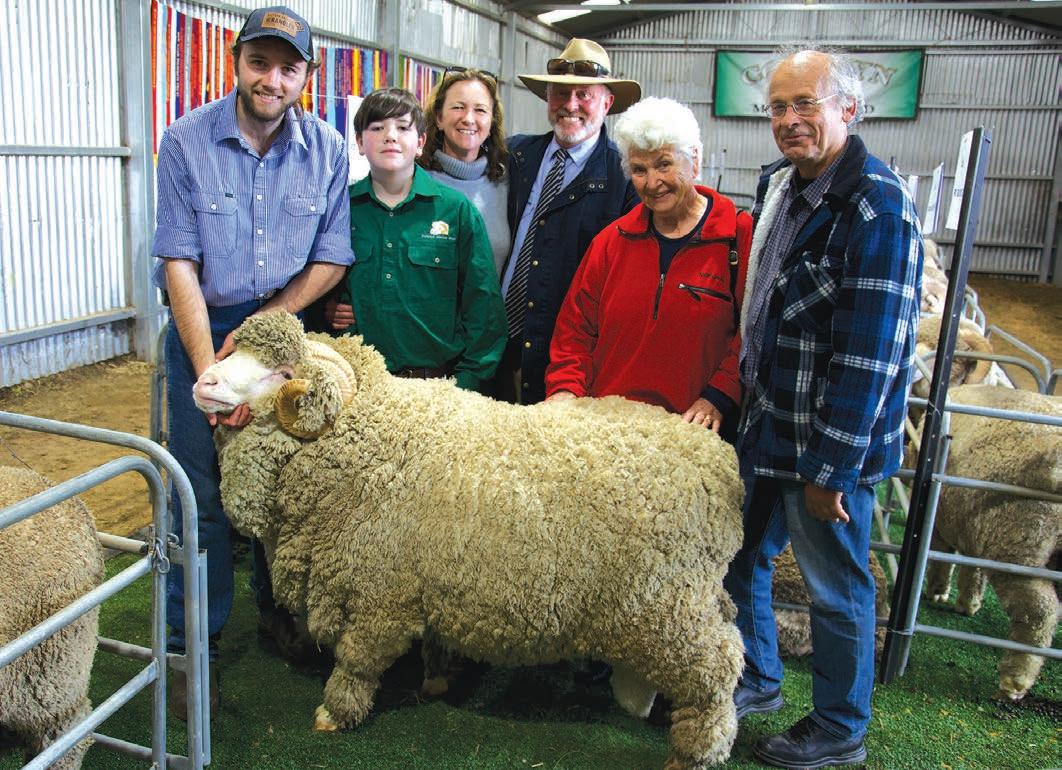

Conrayn ram sale will be held onproperty on October 19.
Sale 2:30pm, Inspection 12.30pm
30 2 year old rams
20 1 year old rams
We had major show success this year winning Supreme at both the Australian sheep and wool show at Bendigo and the Rabobank national at Dubbo with our superfine ewe Perfection54.
We sent six fleeces to the AUSTRALIAN Sheep & wool show at Bendigo this year winning champion extra ultrafine, most valuable commercial fleece classes 9-13,state champion for NSW .
The rams this year have come through a very wet 12 months still maintaining a lovely bright, white stylish wool .

We look forward to seeing you at the sale, if you require pre sale inspections please contact Peter & Jayne.
NSW Department of Primary Industries (DPI) is leading a campaign to support livestock industries by visiting properties in Sydney and providing vital information about feed which could endanger animal health.
NSW DPI regulatory operations manager, Mark Mackie, said staff are checking in with people who have recorded they have pigs and cattle to help protect them from emergency animal diseases, such as foot-and-mouth disease and African swine fever.
“Biosecurity staff review the animals’ diets to ensure they are being fed foods that do not compromise their health or result in an emergency animal disease,” Mr Mackie said.
“Livestock should never be fed food scraps which may contain contaminants. Food scraps, known as prohibited pig feed or swill and restricted animal material (RAM) for cattle, can make livestock sick and spread disease.
“Unsafe for pigs and cattle, swill and RAM may contain meat, meat products or other food scraps which have come into contact with meat or a meat product.
“Under the NSW Biosecurity Act 2015, it is illegal to feed or allow livestock access to swill or RAM. This legislation aims to protect our livestock industries and pets.”
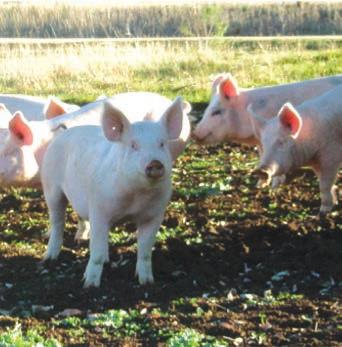
NSW DPI is leading the campaign in partnership with Greater Sydney Local Land Services and plans to visit up to 100 properties during August and September.
More information about protecting pigs from emergency animal diseases and what you can and can’t feed pigs and cattle (PDF, 3006.31 KB) is available from the NSW DPI website.
Greenland Merino Stud is located at Bungarby on the Monaro, NSW.
The Monaro is a challenging environment and this year is no exception, usually it’s not enough rain but this year it is the reverse, this highlights the importance of good quality lustrous white wool with the correct wax to swint ratio.
With more chemical resistance to flies, we must breed sheep with superior wools that don’t need as much chemical use. Greenland has always concentrated on these characters as well as structural correctness. Good quality white wools always create good competition from the wool trade as they perform well in the textile mills. It’s been a long time since we’ve seen a huge difference between 17 to 19 micron wools that highlights the importance of genetic stability with wool that doesn’t blow out too far when the seasons are kind.
We have been using Merino Select for five years to cater for the producers looking for traits that they wish to improve. Greenland has been pedigreeing their flock since 1986 giving it a great predictability for breeding stable genetics. We have different families within the stud and

have always kept them separate so that sheep breeders can purchase with confidence that, that is the wool they will produce. Even though we are using Merino Select, we still place a huge emphasis on visual appraisal, traits that are not measured, such as structural soundness, superior wool quality, correct nourishment, mothering ability, good neck extension, body length, good spring of rib, fleece rot resistance, adequate width in the forequarters and above all a good constitution.
These are simple attributes to keep right so that Merino sheep can be managed easier.
We still show sheep, usually only juniors as I believe they should be in the paddock producing as two year olds.
It costs a lot of money to show but it is still the best place to source genetics as you can compare apples with apples and also to compare your own genetics with industry standards, if you take your hands off the wheel for a while you will get left behind.
Sire evaluations are also important as you can compare apples with apples under the same environmental conditions providing the ewe base of the trial is suitable for your type of ram. These are all the things that make the
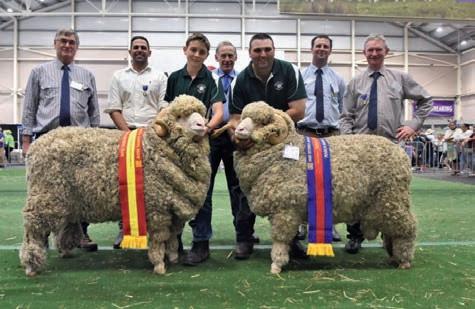
Shearing training bodies in Australia and New Zealand have come to an agreement to coordinate shearer and wool-handler training between the two countries in a bid to address the global shortage of shearers and trained wool handlers.
The Memorandum of Understanding was signed by Australian Wool Innovation (AWI), along with Australia’s largest shearing and wool handling training organisation, SCAA Shearer Wool Handler Training Inc (SCAA SWTI) and New Zealand’s shearing training body, Elite Wool Industry Training NZ.
“The agreement is not a silver bullet for the issue of skills shortages but it will provide a platform that can align the approach to solving or at least mitigating some of the training issues that both nations are experiencing at the moment,” SCAA SWTI CEO Glen Haynes said.
“This agreement will allow for the training organisations to work together on shearing and wool handler training consistencies, across the Tasman. For example, it will help ensure that when young kiwis come to Australia to shear, their shearing pattern and technique will be consistent and align with what the Australia market
requires. It will also ensure that young Australians travelling to New Zealand will have a better understanding of the New Zealand Crossbred shearing techniques, as will the wool handlers.”
The skill shortage experienced over the past two years has seen the price of shearing rise by over 20 percent and the transient nature of the workforce is seeing increasing numbers of shearers and wool handlers travelling between Australia and New Zealand for work experience.
AWI’s head of shearer training, Craig French said he sees the additional benefits from working with our New Zealand counterparts.


“The shearer and wool handler shortage is an international problem and therefore we need to take a broader approach to addressing it,” Mr French said.
“Over the next three years, Australian wool growers will invest more than $10 million into shearer and wool handler training. We are best to have an agreement with our TransTasman counterparts, to ensure this investment is not one-sided and in sync with what is happening in New Zealand. This MOU will allow this process to happen more easily.”
merino industry tick. It is made up of science, visual traits, management, environment and a lot of common sense.
We welcome any inquiries any time.
www.greenlandmerinos.com.au or email alcock@skymesh.com.au
Phone John 0264536244 or Greg 0487857821.
Located in the NSW Southern Tablelands north of the Snowy Mountains and just outside the village of Bredbo, Macenmist Black Truffles and Wines are proud to have created a very successful farming oasis and agritourist adventure.
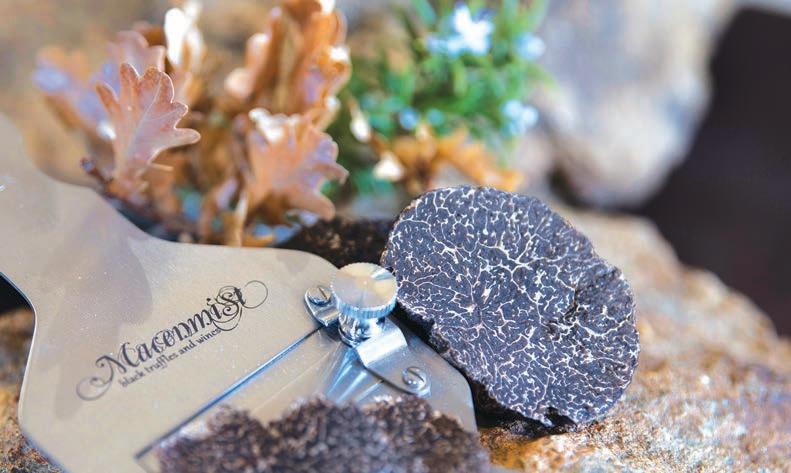
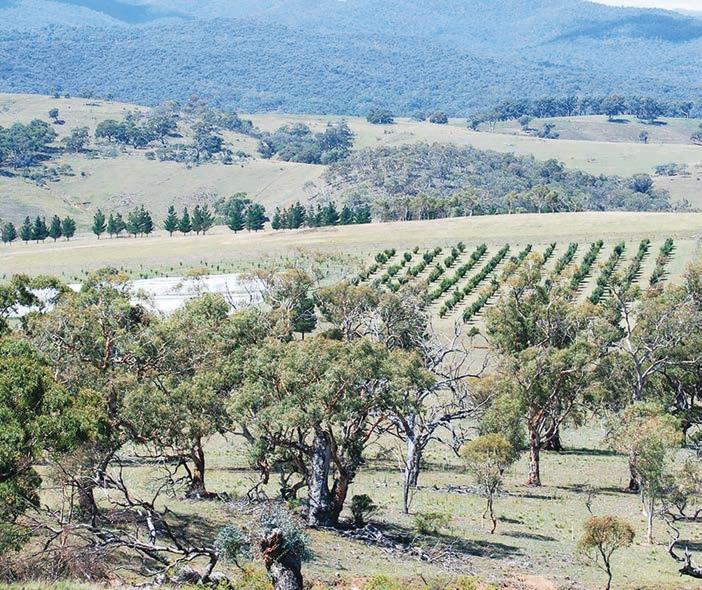
What started with a run-down shed and a few gumtrees Richard and Barbara Hill now boast a function centre that hosts truffle tours, demonstrations and events.
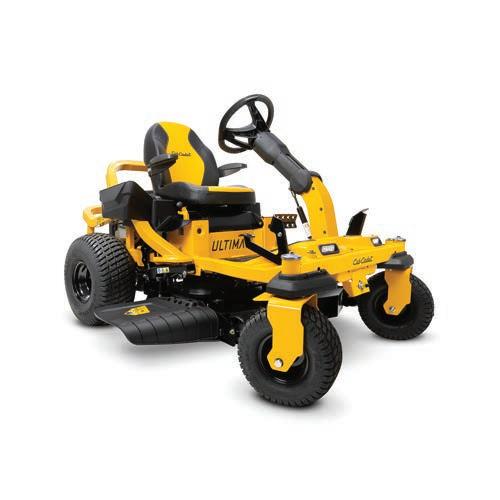

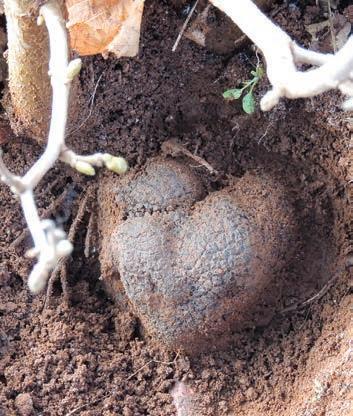
Thirty-eight hectares of their land was devoted to trees, a radiata pine plantation was planted followed closely by the planting of 10,000 native species and two hectares spared for the homestead and garden.
Macenmist planted its first vines in 2000 then a few years later after investigating the merits of the Perigord black truffle preliminary work was undertaken to establish an area suitable for a truffle plantation.
The Snowy Mountains climate is perfect for truffle production and presumably due to the high increase in rainfall this season the truffles are the biggest Richard and Barbara have seen produced on their land.
The bigger the truffle the bigger the profit and Richard and Barbara have had a bumper season as they on sell their produce to businesses in Sydney, Canberra and Melbourne.
Barbara said truffles can be an added ingredient in almost any meal you make and one of her favourites is the truffle cheese cake she makes with hazelnuts, cream cheese and truffle with a drizzle of chocolate ganache on top.
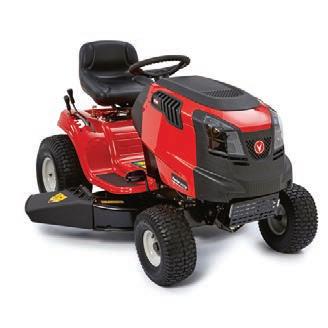
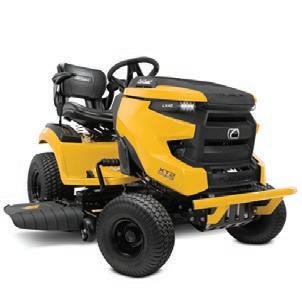

“I am also in the process of writing a recipe book with truffle as the main ingredient in all dishes. Instead of handing out a recipe card to the tourists I thought why not make a recipe book instead”, Barbara said.

After a two-year agritourist hiatus due to COVID Barbara said this truffle season has been a sell out with all tours booking up in advance and came as a pleasant surprise to see people out traveling again.
“Our tours include a guided tour through the truffery, we give people the opportunity to go out into the field with the truffle dogs as they hunt then we show them how a truffle is harvested,” Barbara said.
“Then we show a video of how to clean and braid the truffle before we sit down with a glass of our wine and enjoy a tasting or a meal with the truffle we just harvested.”
The duo has also started a coach tour out of Sydney and Singapore which they trialled this year with great success and look forward to a lot more travellers come through the region as travel restriction are continuing to ease.
Macenmist Black Truffles and Wines stocks a bunch of local produce from around the region which people are able to purchase including black garlic, truffle butter, truffle salts, oils from Numeralla and of course their own selection of truffle products and wine.
Macenmist Black Truffles and Wines is located at 230 Cappanana Road, Bredbo NSW 2626 and it is recommended to call ahead to peruse the produce store on 02 6454 4095 and visit the website to book the next truffle tour www.macenmist.com.au
It’s not often that too much rain is a problem for Monaro farmers, but that has certainly been the case this year, and with a third consecutive La Nina recently declared, the trend of wet weather looks set to continue through the coming spring and summer months.



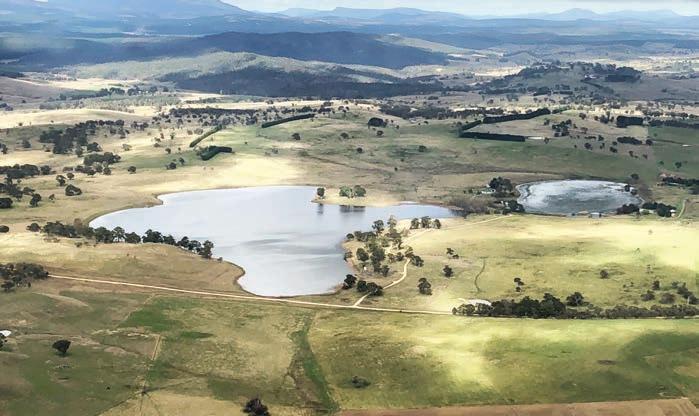
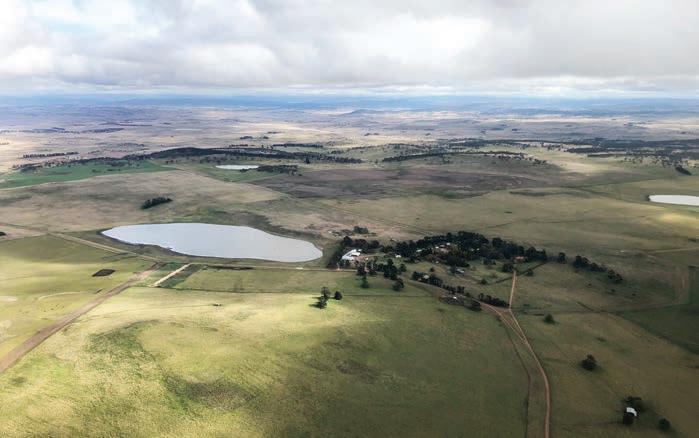
According to the latest Climate Driver Update from the Bureau of Meteorology (BOM), models indicate the La Nina may peak during spring and return to neutral conditions in early 2023.
The negative Indian Ocean Dipole (IOD) event is also continuing and is expected to persist at least until late spring. A negative IOD typically increases the chance of above average spring rainfall for most of the eastern part of Australia. When La Niña and
negative IOD conditions combine, the likelihood of above average rainfall over Australia is further increased, particularly for the eastern half of the continent.
The Southern Annular Mode (SAM) is currently positive and is likely to remain generally positive throughout spring into early summer. During the spring months, positive SAM increases the chance of above average rainfall for parts of eastern New South Wales.
Most models also indicate the Madden–Julian Oscillation (MJO) will strengthen over the Maritime Continent in the coming week and maintain moderate strength as it moves east towards the western Pacific. While active in the Pacific at this time
of the year, the MJO increases the chance of above average rainfall over the eastern half of Australia. All of this combines to create a particularly wet forecast for the coming months.
“Another upper low-pressure system will move in south-east Australia over the weekend, spreading showers and isolated thunderstorms across much of NSW and Vic, with these conditions easing on Monday,” a BOM spokesperson said last week.
“Flooding is likely to continue for many weeks and months to come. With dams full, ground saturated, and snowmelt over the coming weeks, even light to moderate falls may lead to renewed rises and additional flooding.
With perfect growing conditions, now is the time to book your spring and summer spraying needs.
